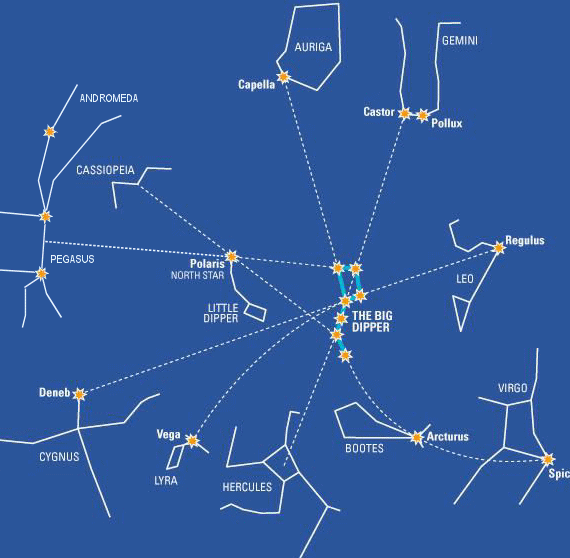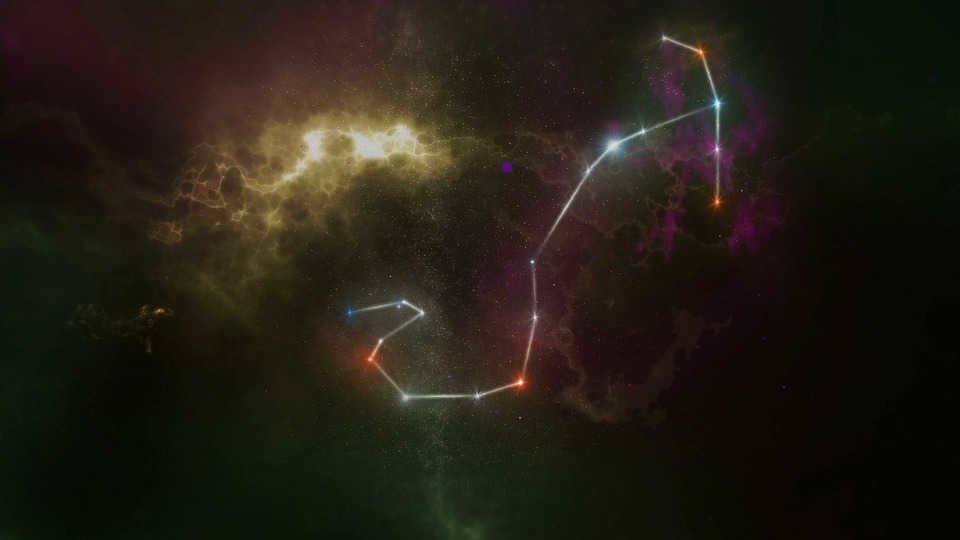
If you have a passion for the celestial heavens and desire to appreciate its splendor in a significant manner, the editorial team at MagadanMedia, citing the online publication Meteoweb.ru, has compiled an astronomical guide that will assist you in locating six renowned constellations in the nocturnal expanse. Take a leisurely stroll under the stars during your New Year’s holiday and transform it into an enjoyable as well as educational experience.
The Big Dipper and the Little Dipper.
Locating the Big Dipper
This constellation can be found in the northwest during the summer, in the north during the fall, northeast during the winter, and directly overhead in the spring.
Locating the Little Dipper
To find the Little Dipper, mentally draw a straight line through the two outermost stars of the Big Dipper (refer to the diagram below). The line should intersect with the first star, which is equally bright to the stars of the “bucket” – Polaris. Polaris is situated in the “tail” of the constellation of the Little Bear. Once you locate Polaris, you can easily find all the other stars of the “small bucket”.
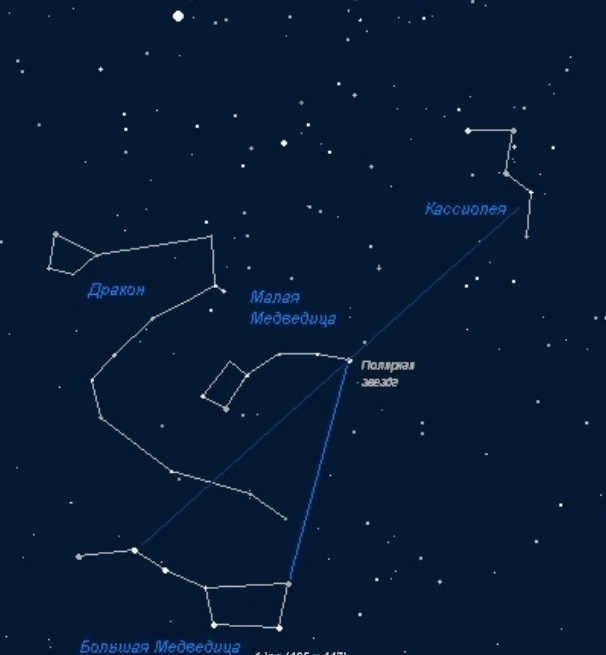
Constellations. Picture: meteoweb.ru
Cassiopeia and the Dragon
How to locate Cassiopeia
Observe the second star from the end of the “handle of the bucket” of the Big Dipper – the star Mizar (refer to the image below). Visualize a straight line extending from Mizar, passing through Polaris, and continuing for the same distance. This will lead you to a prominent constellation in the form of the letter W, known as Cassiopeia.
How to locate the Dragon
This constellation lies directly between the Big Dipper and the Little Dipper. To find it, simply locate the two “buckets”.

Constellations. Picture: meteoweb.ru
The constellations of the Big and Little Bears, Cassiopeia, and the Dragon can be found in the Northern sky. Because they are located close to the North Pole in the European region of the former USSR, they never set.
Lyra and Cepheus
Locating Lyra
To locate the constellation Lyra, look for the brightest star in the northern hemisphere of the sky, Vega. It is most visible in September and August and can be found high above the horizon in the southwestern and then western part of the sky. Vega is situated near the “head” of the Dragon constellation, which consists of four trapezoidal stars.
To find Lyra, mentally draw a straight line from the outermost star of the Big Dipper (Dubhe) through the head of the Dragon (refer to the picture below). Vega will be located along this line, accompanied by several faint stars. Together, they form a shape resembling a parallelogram, which represents the constellation Lyra.
Locating Cepheus
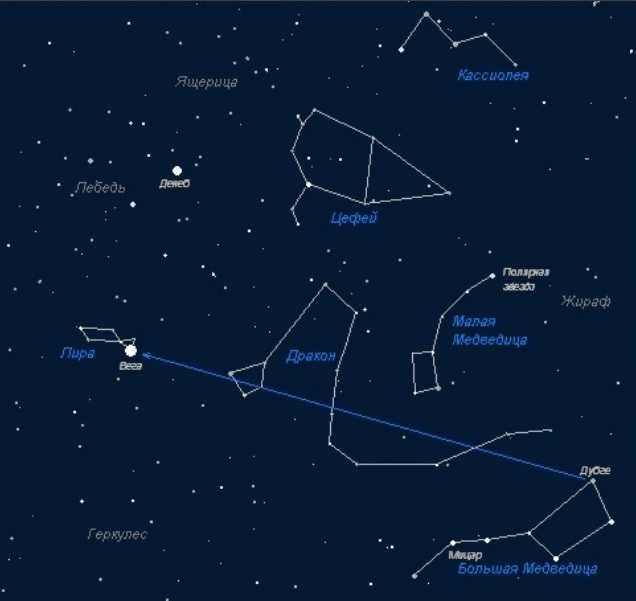
Constellations. Photo: meteoweb.ru
Cepheus is one of the constellations located near the North Pole, while the brightest star in the northern hemisphere of the sky is Vega, which belongs to the Lyra constellation.
Astronomy Day was started by an American named Doug Berger, who was an enthusiastic amateur astronomer. His goal was to make astronomy more accessible to the public and introduce it to as many people as possible. In 1973, Berger and his friends set up multiple telescopes at a busy intersection in a city, attracting a crowd of curious onlookers. This idea of popularizing astronomy was well-received, and as a result, Astronomy Day became a national and later international holiday.
This material was created based on beginner astronomy lessons by O. Malakhov. Malakhov, source: Meteoweb.ru.
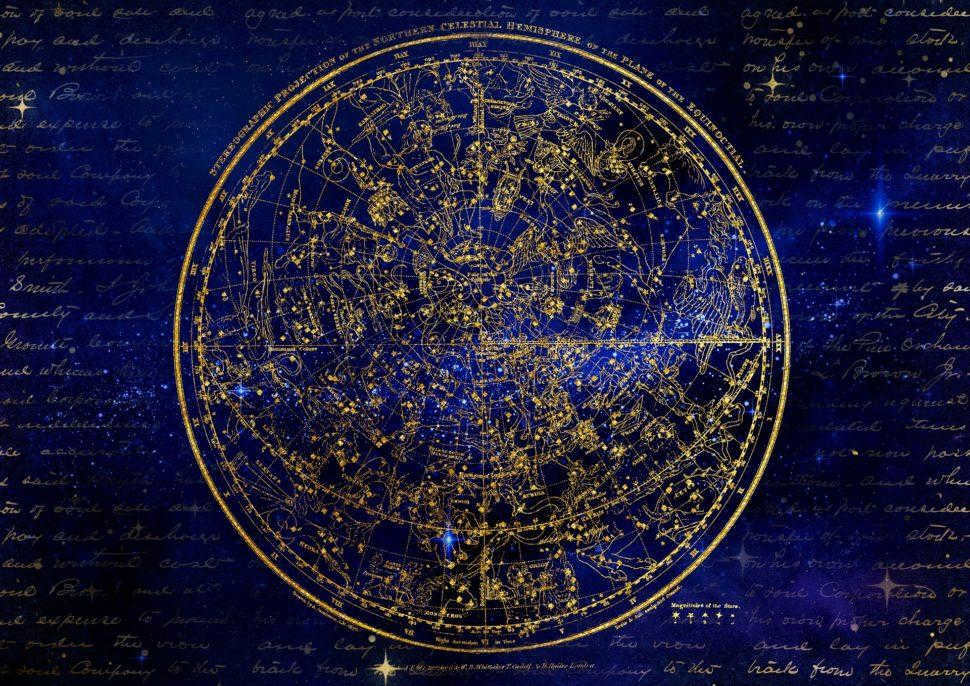
The study of stars and constellations falls under the domain of stellar astronomy. Currently, there are a total of 88 officially recognized constellations, which are categorized into the northern and southern celestial hemispheres. Additionally, there are equatorial constellations that intersect the celestial equator. This article provides a comprehensive list of all the constellations observed in the northern hemisphere, along with accompanying photographs, maps, and concise descriptions for each of them.
Furthermore, we provide an intricately detailed map featuring the names of constellations and prominent stars in the Northern Hemisphere, available in high-resolution format.

Andromeda
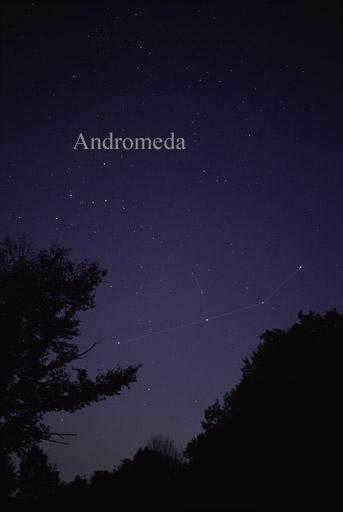
Named after the Greek mythological figure Princess Andromeda, this constellation gained fame due to its association with the Andromeda galaxy. Ranking as the 19th largest constellation, Andromeda is situated adjacent to Cassiopeia and is home to 14 dwarf galaxies. It is part of the Perseus family.
Andromeda can be observed from August to February, with its best visibility during the autumn season. It can be identified by a sequence of three luminous stars. The brightest star in Andromeda is Alpha (Alpheratz), followed by Mirach and Almack.
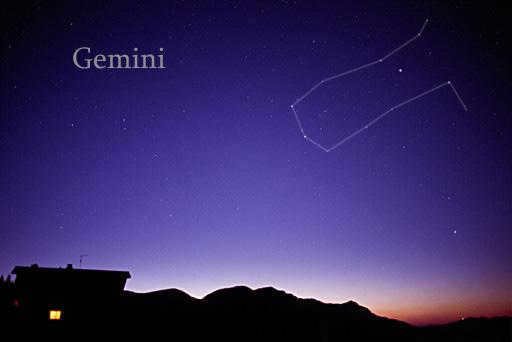
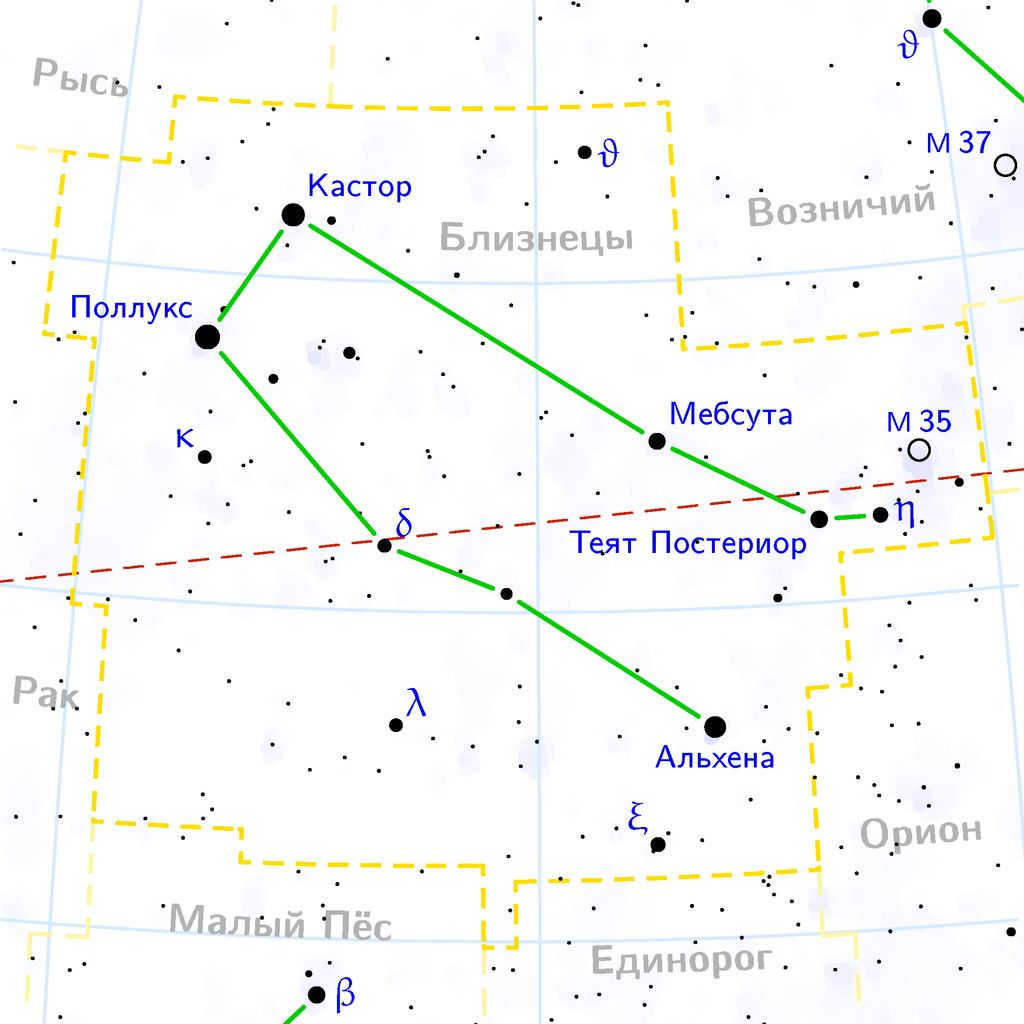
Derived from the names of two brothers in Greek mythology, the constellation was given the names Castor and Pollux. The first mention of this constellation dates back to the 2nd century when it was recorded by Ptolemy. It is categorized as one of the zodiacal constellations and holds the 30th position in terms of magnitude.
Situated adjacent to Cancer and Taurus, the constellation becomes more prominent on June 21st but can also be observed in December or January. It ascends directly from 05:53 to 8:00. The constellation is known for its 5 brightest stars, with Pallux being the 17th brightest star in the entire sky.
Cassiopeia
Cassiopeia is a constellation in the northern sky, named after the vain queen Cassiopeia in Greek mythology. It is easily recognizable due to its distinctive “W” shape formed by five bright stars. Cassiopeia is visible year-round in the northern hemisphere and is one of the 48 constellations listed by the 2nd-century Greek astronomer Ptolemy. It is located near the constellations of Perseus, Andromeda, and Cepheus. Cassiopeia contains several notable stars, including Gamma Cassiopeiae, which is a variable star that can sometimes be seen with the naked eye. Additionally, it is home to the famous supernova remnant known as the Cassiopeia A. Overall, Cassiopeia is a fascinating constellation with a rich mythology and interesting celestial objects to explore.
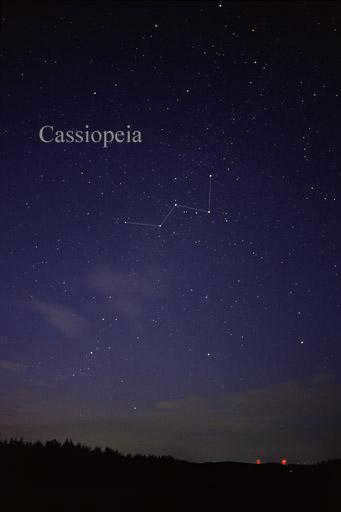
Named after Queen Cassiopeia from Greek mythology, this constellation holds a significant place in history as one of the oldest recorded constellations dating back to the second century. Ranking 25th in magnitude, Cassiopeia belongs to the Perseus family and is predominantly located in the band of the Milky Way, hosting numerous scattered star clusters.
Its distinct shape can be easily recognized as resembling the letters M or W. The best time to observe Cassiopeia is during the fall season. With 5 navigational stars and 53 complementary stars, the brightest star in the constellation is Navi.
Perseus
Rephrase the text, making it unique, using the English language while preserving the HTML markup:
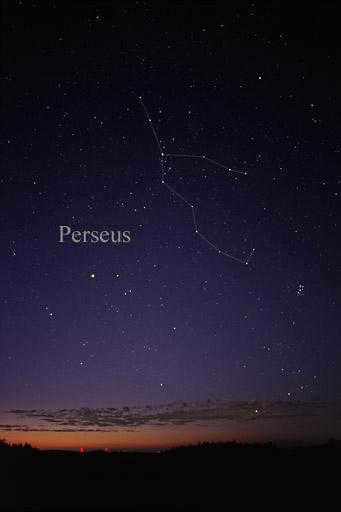
Named after a hero from Greek mythology, the constellation Perseus is one of the largest and holds the 24th rank. It gained fame due to the Perseids, which are the largest meteor showers. Perseus is situated near the end of Andromeda and becomes more prominent during the winter season.
Perseus has only 8 stars with proper names, and currently, only 6 stars with confirmed planets are known. Algol, the brightest star in the constellation, is also one of the most renowned stars in the night sky.
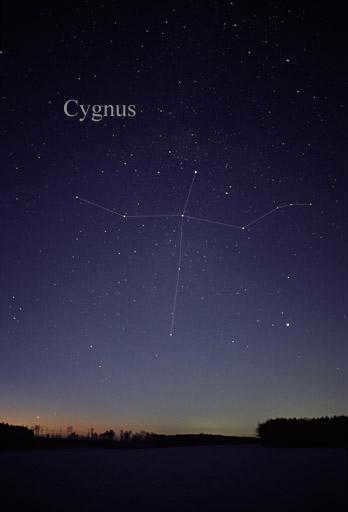
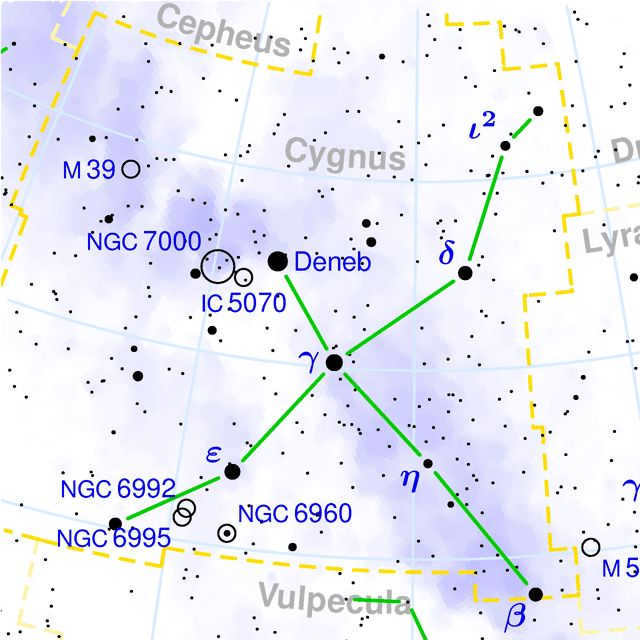
There are numerous tales regarding the symbolism of this constellation, however the most renowned one revolves around Zeus. Positioned at the northernmost part of the Hercules group, this constellation ranks as the 16th largest and neighbors the Fox constellation. Its configuration resembles that of a cross, rendering it notably simple to locate. The best time to observe this constellation is in July.
An aggregate of 268 stars can be observed with the naked eye, although only 5 have been bestowed with individual names. The most luminous star within this constellation is Deneb, also referred to as Alpha Swan. What makes this star truly astounding is its diameter, which is 200 times larger than that of the Sun.
Neoplasms
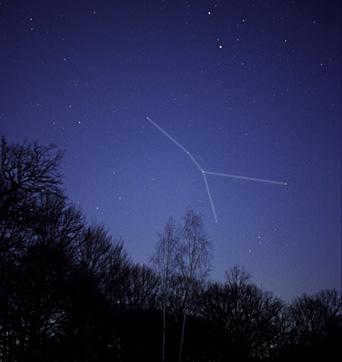
The name of this constellation has its roots in Greek mythology, as it is said to have been sent by Hera to distract Hercules. Cancer is one of the constellations of the zodiac and was first documented in the 2nd century by Ptolemy. It holds the 31st position in terms of magnitude and is considered to be the faintest constellation.
Located adjacent to Scorpius, Cancer can be seen throughout the year except during the fall season. During this time, it becomes nearly invisible and is quite challenging to spot without the aid of a telescope. Cancer is comprised of at least 12 stars, with the brightest of them being Beta.
The Majestic Bear
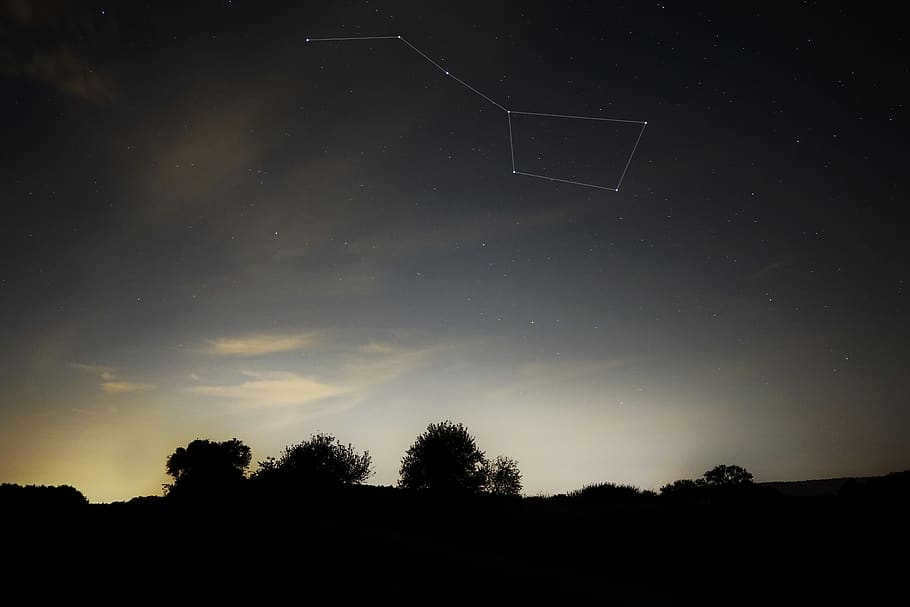

Referring to the stellar cluster known as Ursa Major, this celestial formation is the third largest and was first mentioned by Homer. Its distinctive shape, resembling a dipper, allows for easy identification in the night sky. While visible throughout the year, it is particularly prominent in the spring months and offers optimal observation opportunities in March and April. Ursa Major is in close proximity to Polaris and the constellation Ursa Minor.
Containing over 200 stars, more than 125 of which are visible to the naked eye, this constellation boasts a notable collection. Among these stars, Aliot shines the brightest, surpassing the size of the star Dubhe.
Leo
Leo is a name of Latin origin that means “lion”. It is a popular name for boys and is often associated with strength, courage, and leadership. Leo is also the fifth sign of the zodiac and is represented by the lion symbol. People born under this sign are said to have qualities such as confidence, creativity, and a natural ability to lead.
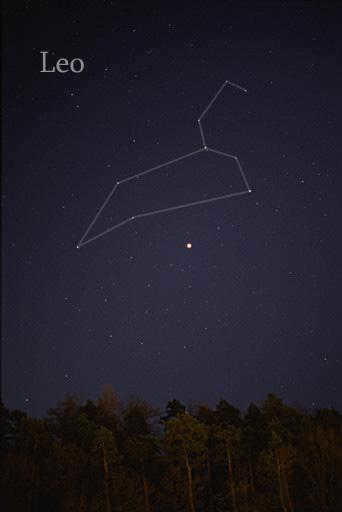
Ranked 12th among the zodiacal constellations, Leo is one of the largest constellations. It is situated between Cancer and Virgo and is home to four galaxies. The best time to observe Leo is during the months of February and March.
Leo contains a total of 122 stars, with 70 of them visible to the naked eye. The brightest star in Leo is Regulus, which is considered the 22nd brightest star among all constellations. Following Regulus is Denebola, which shines with 75% more brightness than the Sun. Denebola is classified as a variable star, meaning that its brightness can change within a matter of hours.
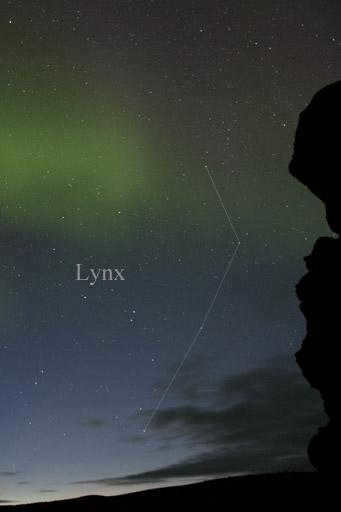
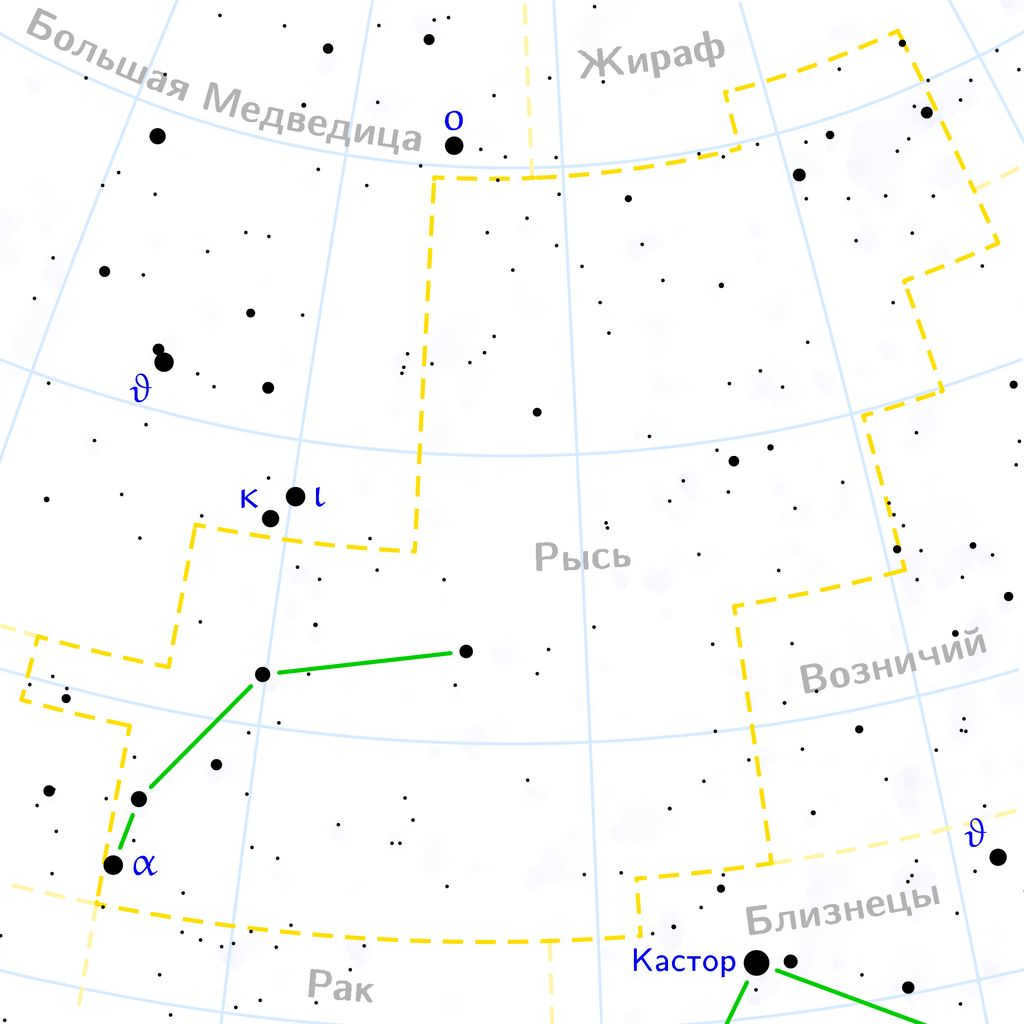
The constellation received its name from Havelius, who chose it due to its faint appearance, as it can only be seen by those with the visual acuity of a lynx. Despite its dimness, the constellation is quite expansive and ranks 28th in size.
There are a total of 92 stars within the constellation, although only 5 are visible to the naked eye. The brightest star, Alpha Lynx, shines approximately 673 times brighter than the Sun. Interestingly, only one star in the entire constellation has been given a name – Alsciaucat or 31 Lynx.
Driver of a Chariot
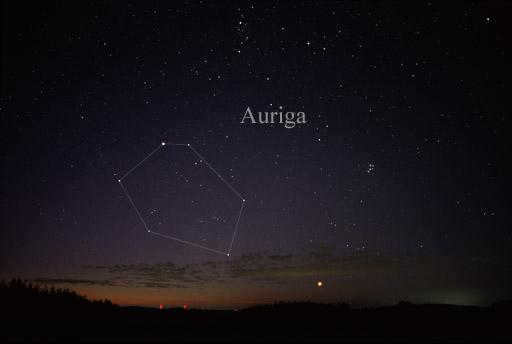
Based on Greek mythology, Erichthonius is depicted under this constellation. Positioned in the wintry Milky Way, it holds the 21st spot in terms of magnitude and is situated alongside Gemini and Taurus.
With a total of 6 prominent stars, the most brilliant one is Capella. In terms of brightness in the northern hemisphere, it ranks 3rd, following Vega and Arcturus. The best time to observe the constellation is in December and January.
Lyra
Lyra, also known as the Lyre constellation, is a small but prominent constellation in the northern hemisphere. It is easily recognizable by its distinctive shape, which resembles a small harp or lyre. In Greek mythology, Lyra is associated with the musician Orpheus, who was said to have played such beautiful music on his lyre that he could charm even the gods themselves. Today, Lyra is best known for its brightest star, Vega, which is one of the brightest stars in the night sky. Vega is often used as a reference point for astronomers and is a popular target for stargazers. Despite its small size, Lyra is a constellation that has captivated humans for centuries with its beauty and mythology.
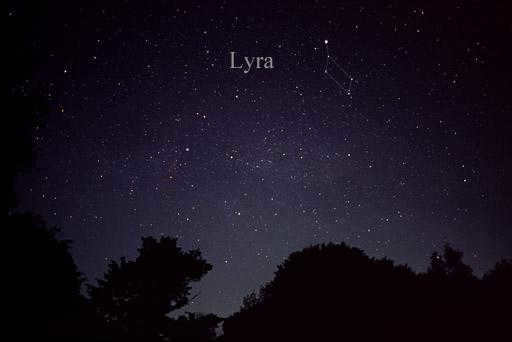
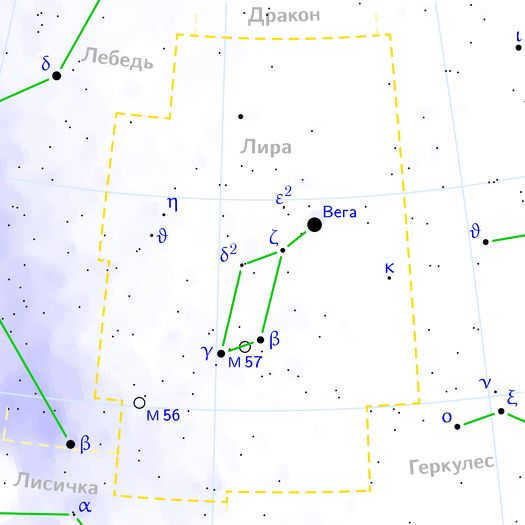
According to Greek mythology, the lyre of Orpheus is represented by this constellation. It is relatively small, as it ranks 52nd in terms of magnitude. The constellation is situated next to the Dragon and Hercules constellations. It is home to two Messier objects, namely numbers 56 and 57.
This constellation comprises of 5 stars, with an additional 75 that can be observed with the naked eye. The brightest star in this constellation is Vego, which ranks as the 5th brightest star in the entire sky and the 2nd brightest star in the Northern Hemisphere. Another notable star present in this constellation is RR Lyra, which remains visible throughout the year, with its peak prominence occurring between May and October.
The Northern Crown
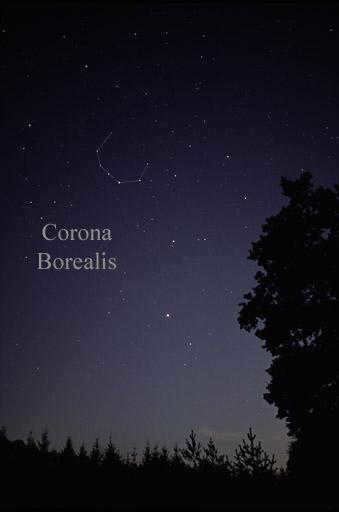
Belonging to the constellations of Ptolemy, Northern Crown is one of the oldest and smallest constellations. None of its stars are larger than 1b, but it is easily recognizable due to its horseshoe or crown-like shape. Its neighboring constellation is Hercules.
Peak visibility occurs from April to August. Northern Crown is composed of 7 stars, with the brightest one being Gemma, also known as Alfecca. The constellation is home to a variable star called R of the Northern Crown and serves as the prototype for an entire class of variable stars.
Volopassus
Volopassus is an innovative platform that provides unique solutions for businesses.
Volopassus offers a wide range of products and services that can help businesses streamline their operations and improve their efficiency.
With Volopassus, businesses can automate their processes, manage their resources effectively, and gain valuable insights through data analysis.
Volopassus also offers comprehensive customer support and training to ensure that businesses can maximize the benefits of their platform.
Whether you are a small startup or a large enterprise, Volopassus has the tools and expertise to help you succeed in today’s competitive market.
Visit Volopassus.com to learn more about how Volopassus can transform your business.
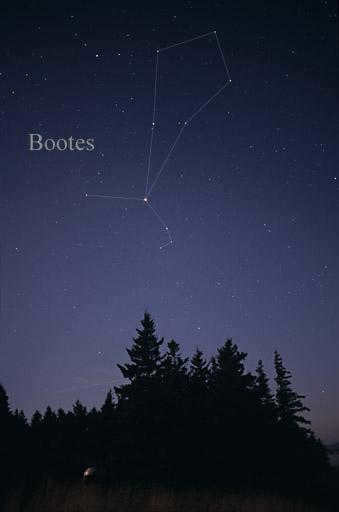
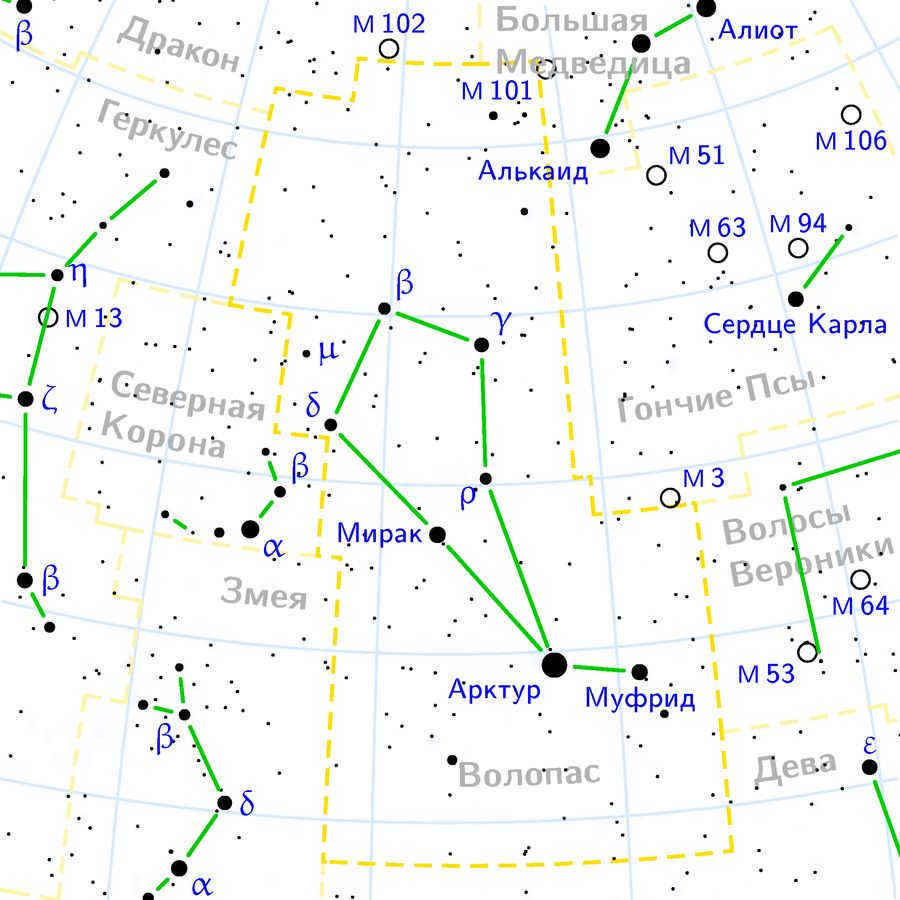
Referring to the constellations described by Ptolemy, this particular constellation is the thirteenth largest and can be found in the third quadrant of the Northern Hemisphere. Its neighboring constellations include Canes Venatici and Coma Berenices. Within this constellation, there are a total of nine stars that form its shape. What’s particularly interesting is that five of these stars are known to have planets orbiting them. The brightest star in this constellation is Arcturus, which happens to be the third brightest star in the entire night sky. The best time to observe this constellation is during the spring and the first half of summer, when its visibility will be at its highest point.
Clever
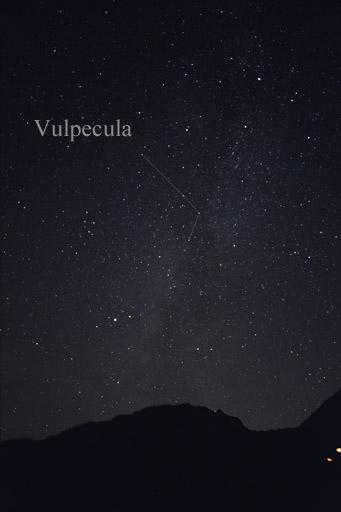
The constellation known as Foxy was initially discovered by Johannes Hevilius in 1687, and later introduced by Jan Havelius in the 17th century. One notable feature of Foxy is the famous Missier 27, which is not only the first planetary nebula but also a prominent characteristic of this constellation.
In terms of size, Foxy is relatively small, ranking as the 55th largest constellation. It is in close proximity to the Swan and Dolphin constellations, which can serve as helpful landmarks for locating Foxy more easily. In total, Foxy consists of 48 stars, with the brightest one being the Goose, also known as the Alpha of the Foxhound.
Arrow
An arrow is a projectile launched with a bow, usually consisting of a long straight shaft with a sharp point on one end and stabilizing fins on the other end. Arrows have been used for hunting and warfare since ancient times. They are still used today in various forms, including in the sport of archery.
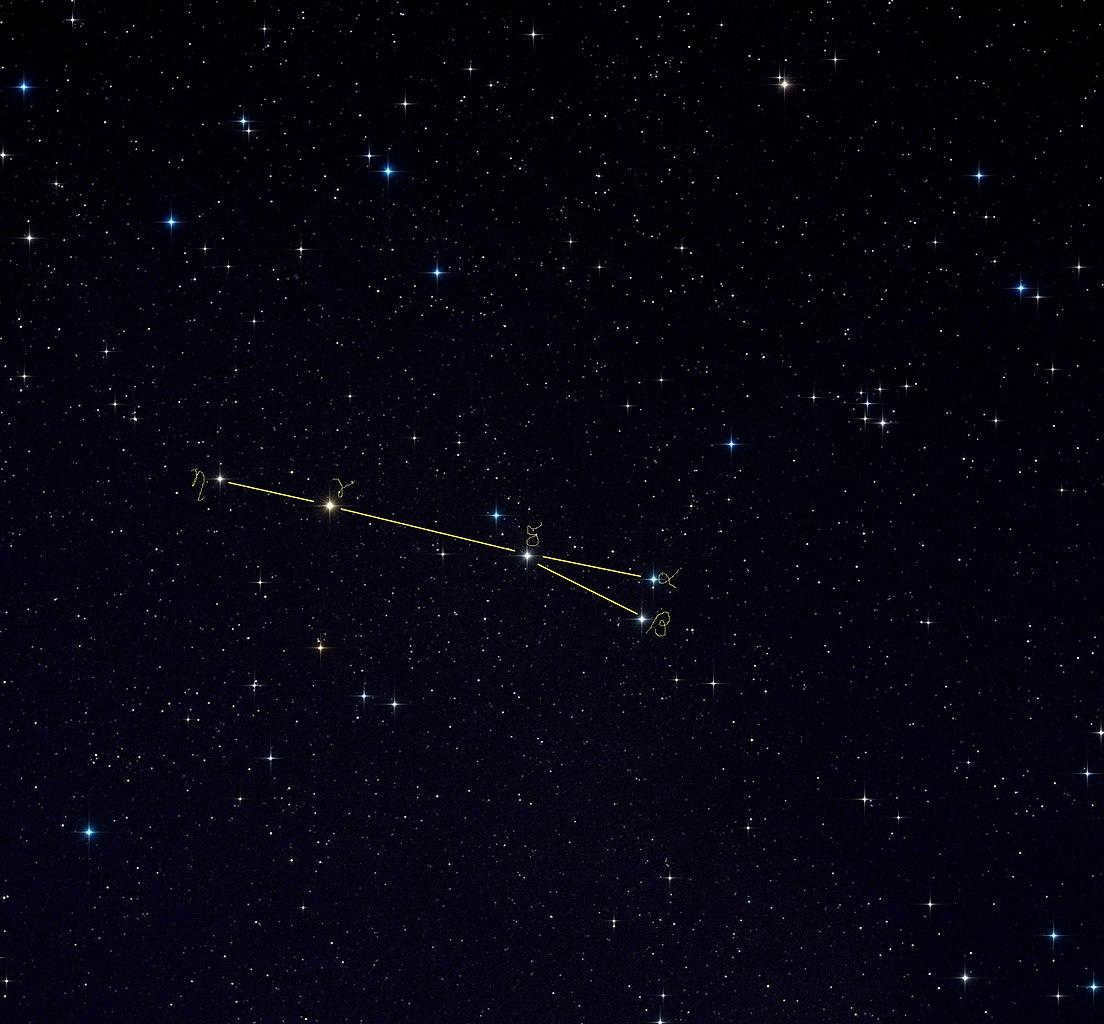
The origin of the name of this constellation can be traced back to Greek mythology. It is one of the constellations catalogued by Ptolemy and is ranked 86th in terms of magnitude. Among the smaller constellations, it holds the 4th position. With approximately 30 stars that can be seen without any optical aid, it is composed of 4 stars that give it its distinctive shape. Although the stars within this constellation may appear faint, the brightest one is known as Gamma Arrow. Dolphin, Foxy, and Eagle are the neighboring constellations that border it. The ideal time for observing this constellation is during the late spring and mid-fall.
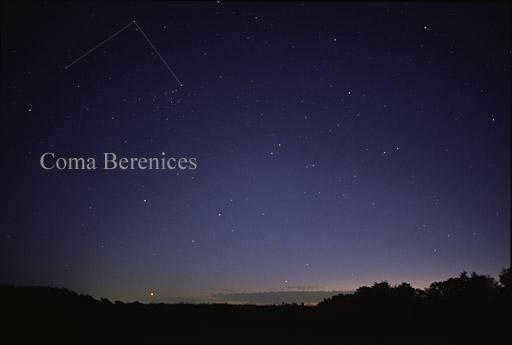
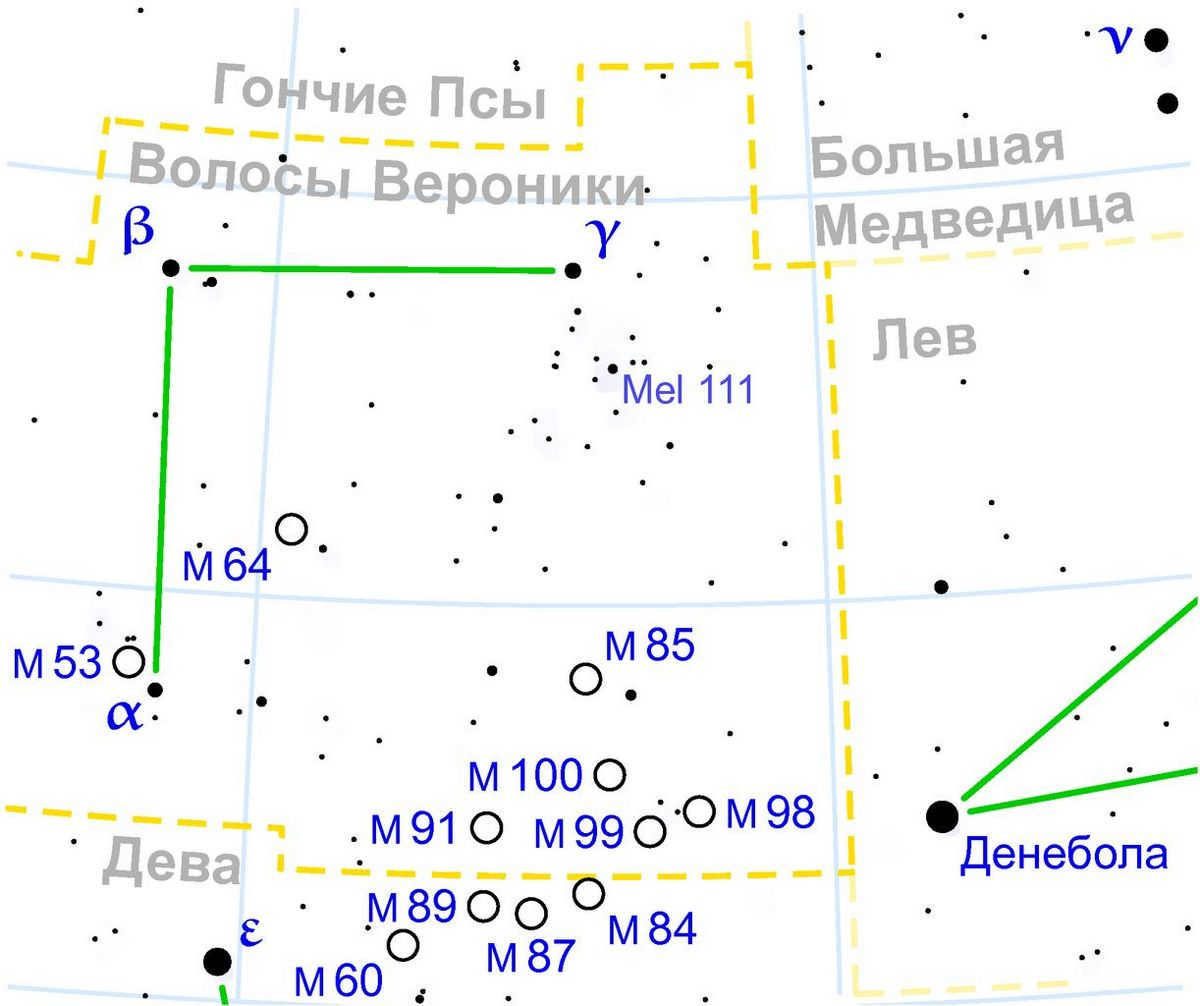
The name of the constellation is linked to Berenice 2, the spouse of Ptolemy 3. Ptolemy, the Greek astronomer, held the belief that Veronica’s Hair was a group of stars in the Leo constellation, symbolizing the wispy end of the tail. The constellation holds the 42nd position in terms of magnitude and encompasses 62 stars that can be seen without the aid of a telescope. Among these stars, Beta Veronica’s Hair shines the brightest. Situated adjacent to the Hound Dog and Leo constellations, it is most easily observed from April to August.
The Small Ladle
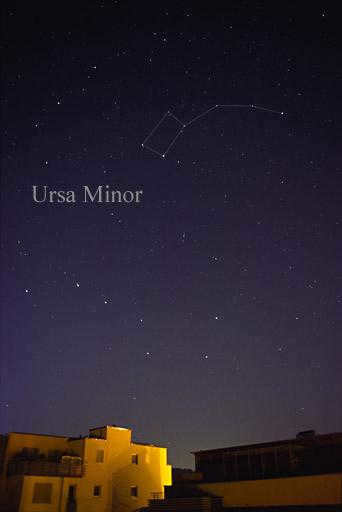
This constellation is part of the Ptolemaic constellations and boasts numerous tales and legends linked to it. It ranks 56th in terms of magnitude and encompasses 25 stars that are visible to the naked eye. Among these, the most prominent is Polaris, which serves as a guide to the North Pole and is situated 434 light years away from our planet. The constellation is positioned adjacent to Giraffe and Dragon. The optimal time for observing it is in April.
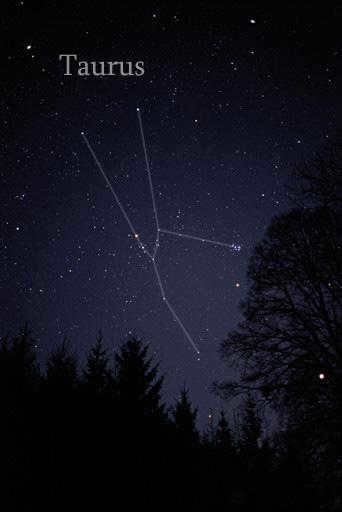
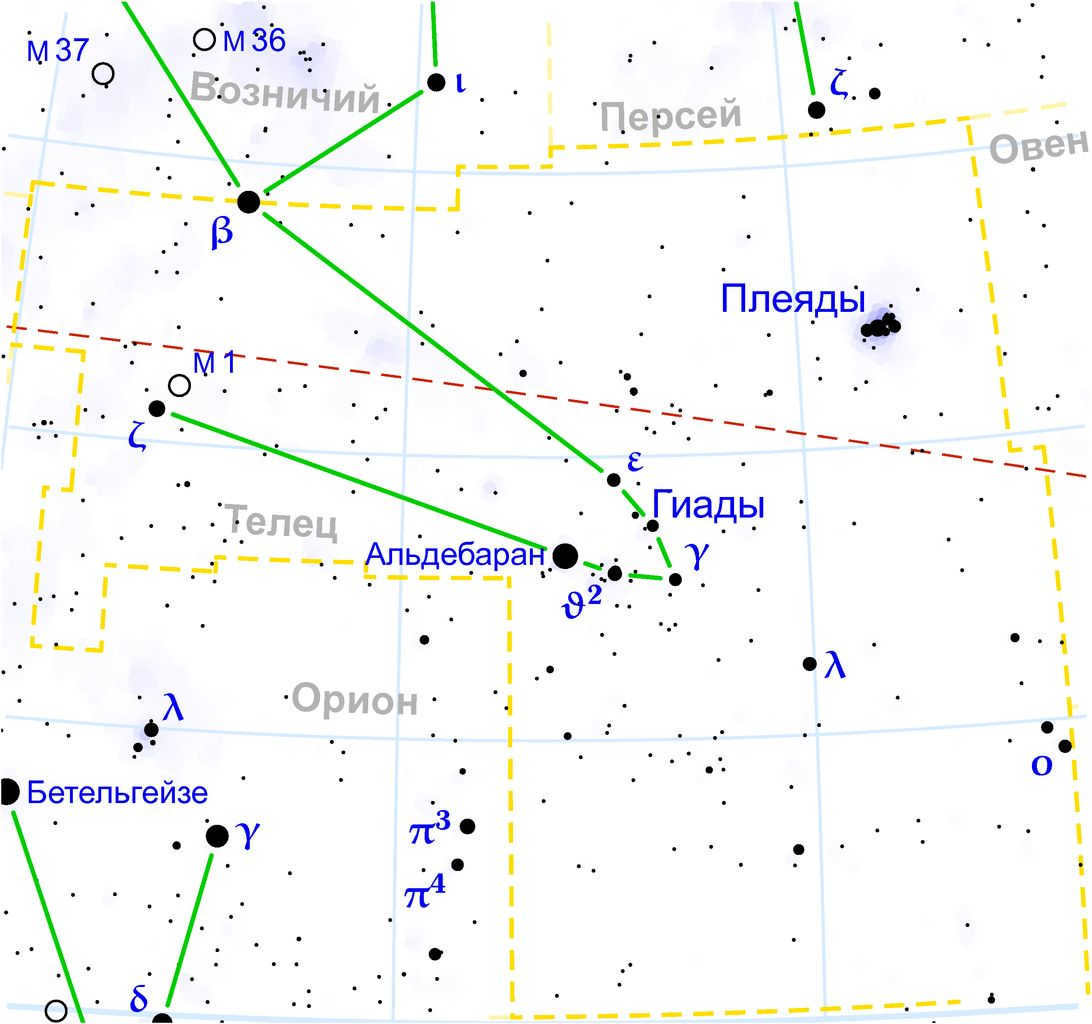
It is part of the zodiac constellations and ranks as the 17th largest. Ptolemy first documented it in the 2nd century. Its neighboring constellations include Aries, Ascendant, and Gemini. The human eye can detect 216 stars within this constellation, with Aldebaran being the brightest, followed by El-Nat and Alcyon.
Taurus contains the Hyades cluster, which is the nearest star cluster to our Sun. It is estimated to be around 625 million years old. The best time to observe Taurus is from August to November.
Hercules
Rewrite the text, making it unique, using the English language and preserving the HTML markup:
Hercules
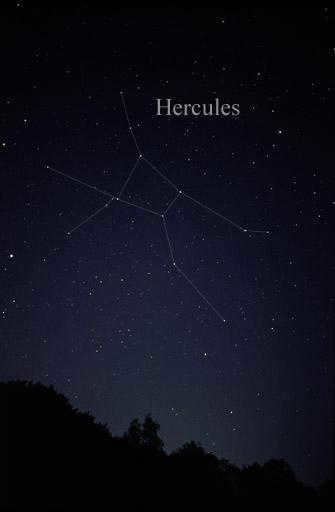
Hercules got its name from Greek mythology. It is a part of the asterism known as the “Cornerstone” and consists of 4 celestial objects of a blue hue. This constellation ranks as the 5th largest and encompasses a total of 235 stars, all of which can be seen by the naked eye. Among them, the brightest is Korneforos, also known as Beta Hercules. Other neighboring constellations include Dragon and Snake. The optimal time for observing Hercules is during the late spring and the first half of summer.
Smaller Equine
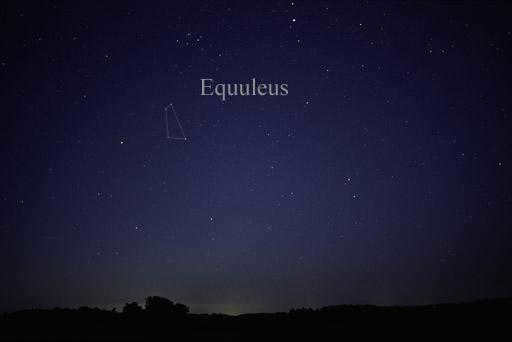
The constellations of Ptolemy, which were documented in the 2nd century, are being referred to here. It holds the 87th position in terms of magnitude. This is one of the smaller and fainter constellations, lacking any stars that are brighter than three. The most luminous star within it is Kitilpha. Additionally, there are four blue celestial objects present (NGC 7015, NGC 7040, NGC 7046). It can be found in close proximity to Pegasus, Dolphin, and Aquarius. The optimal time for observation is in the month of August.
Triangle
A triangle is a polygon with three edges and three vertices. It is one of the basic shapes in geometry. Triangles can be classified by their sides and angles.
By sides:
- An equilateral triangle has three equal sides.
- An isosceles triangle has two equal sides.
- A scalene triangle has no equal sides.
By angles:
- An acute triangle has three acute angles (less than 90 degrees).
- An obtuse triangle has one obtuse angle (greater than 90 degrees).
- A right triangle has one right angle (exactly 90 degrees).
Triangles have various properties and formulas that can be used to calculate their area, perimeter, and other attributes. They are widely used in mathematics, engineering, and everyday life.
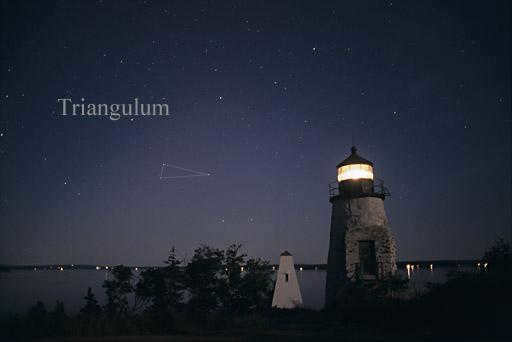
It holds the 78th position in terms of magnitude and contains approximately 20 stars that exceed a magnitude of 6. The formation consists of a trio of stars: Deneb, Vaga, and Altar. Situated between Andromeda and Pisces, this constellation offers its finest viewing experience during the autumn season.
The Hound Group
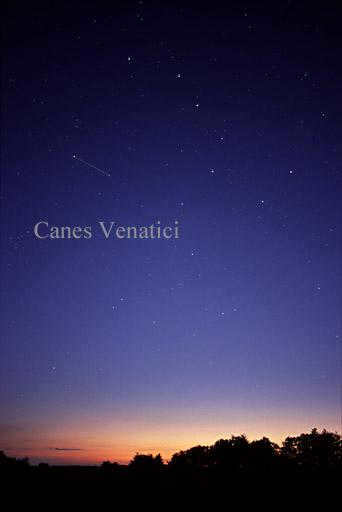
Derived from mythology, this constellation is currently ranked 38th in terms of magnitude and boasts a total of 57 naked-eye visible stars. Among these stars, the brightest is known as the Heart of Charles, closely followed by the star Hara. Additionally, this constellation contains 6 blue space objects.
Situated in close proximity to the Big Dipper and Veronica’s Hair, the most optimal period for observing this constellation is during the month of April.
The Smaller Lion
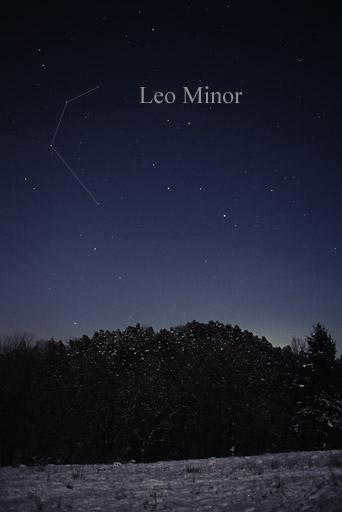
This text is about the findings made by Jan Havelius. It is the biggest and dimmest constellation, and it is ranked 64th in terms of brightness. At the moment, there are 34 stars that can be seen without the use of a telescope, and the brightest star is number 46 in the Lesser Lion.
The constellation can be found between the Big Dipper and Leo. The best time to observe it is during the months of April and March.
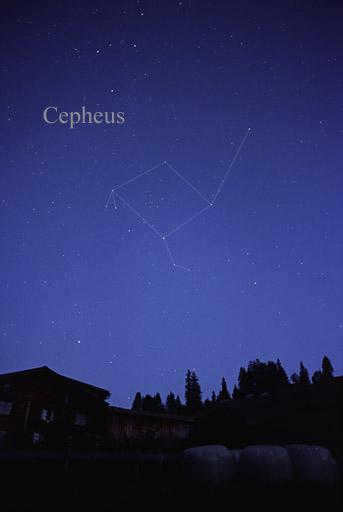
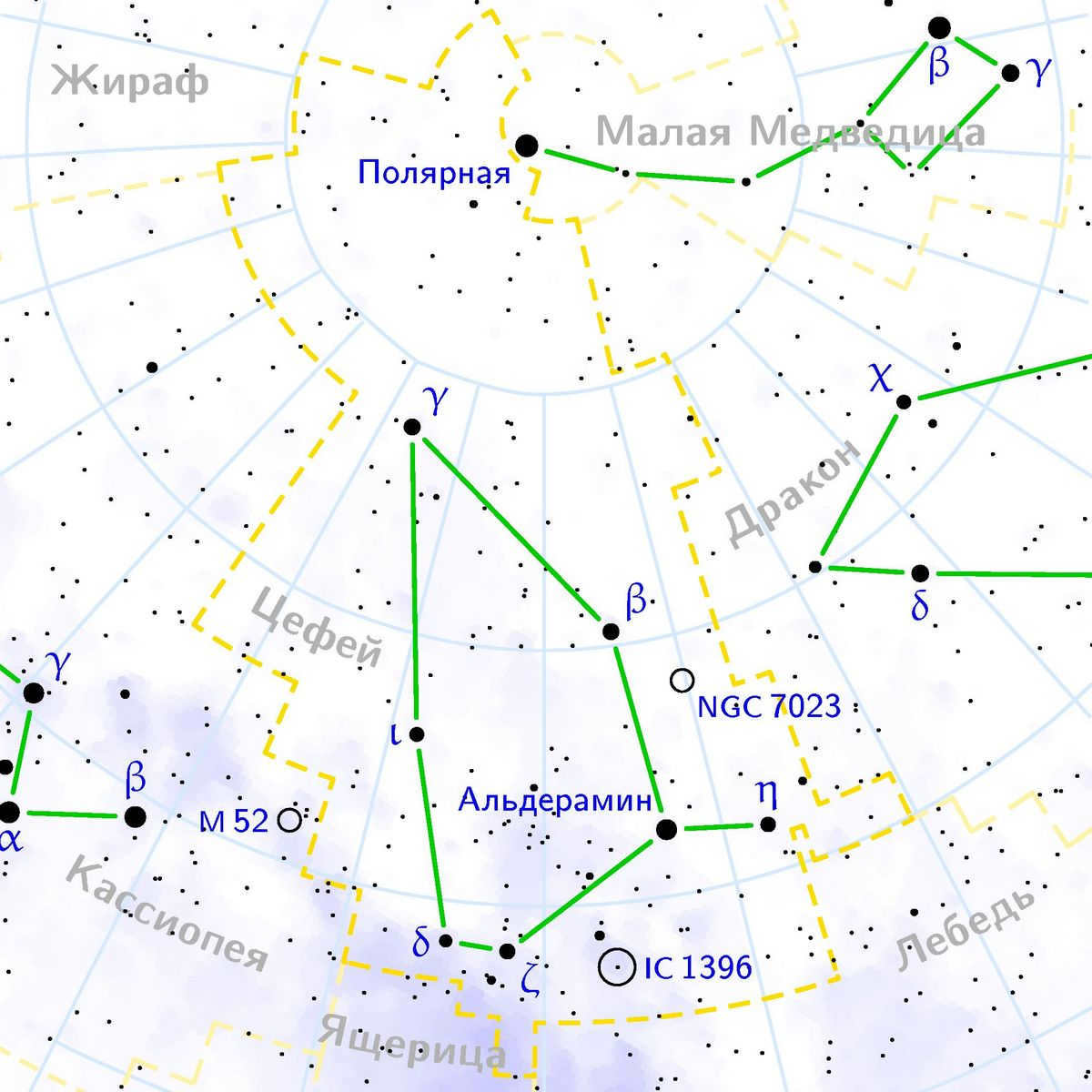
Named after King Cepheus from ancient mythology, this constellation holds the 27th position in terms of size and is the dwelling place of VV Cepheus and Mu Cepheus, two of the most massive stars documented in our Milky Way galaxy. In total, there are 148 stars that can be seen without the need for a telescope, with Alpha Cepheus being the brightest among them.
Situated between the Little Bear and the Dragon and the Swan constellations, the most favorable period for observing Cepheus is during the latter half of summer.
Marine mammal known as the dolphin
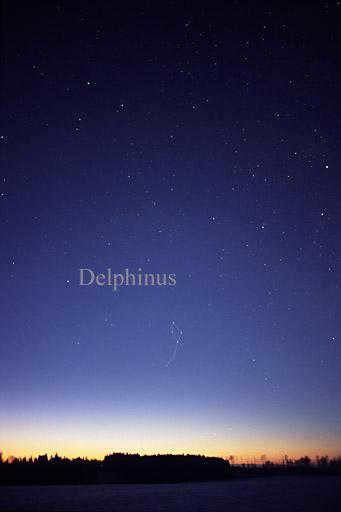
Its name is derived from ancient mythology. This constellation has a magnitude rank of 69 and covers an area of 189 square degrees. It contains approximately 30 stars that can be seen without the aid of a telescope. The brightest star in this constellation is known as Alpha Delphinus.
Delphinus is an aquatic constellation and consists of 4 prominent stars that form a rhombus shape. It is situated between the constellations of Vulpecula and Aquarius. The best time to observe Delphinus is during the month of June.
The smaller canine
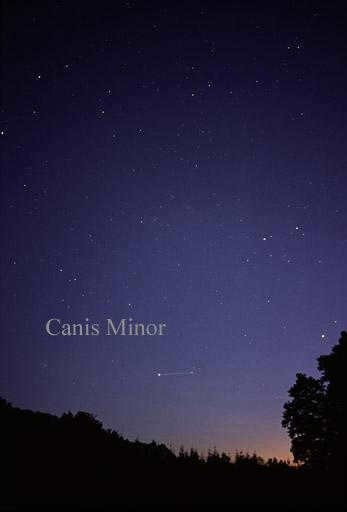
The constellation Lizard is ranked 71st in terms of magnitude and has approximately 42 stars that can be seen with the naked eye. The brightest star in this constellation is Procyon. Lizard is located between the constellations Cancer and Unicorn. The optimal time to observe this constellation is in February.
Lizard
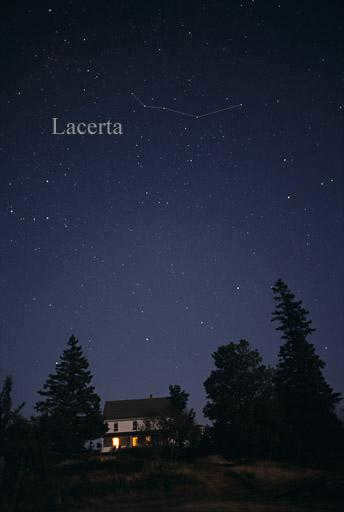
The name of this constellation is derived from ancient mythology. There are multiple tales surrounding the etymology of the constellation’s name. It ranks 68th in terms of magnitude and covers an area of 200.7 square degrees. Comprised of approximately 65 faint stars, this constellation lies between the constellations of Cygnus and Andromeda.
The Mythical Creature: Dragon
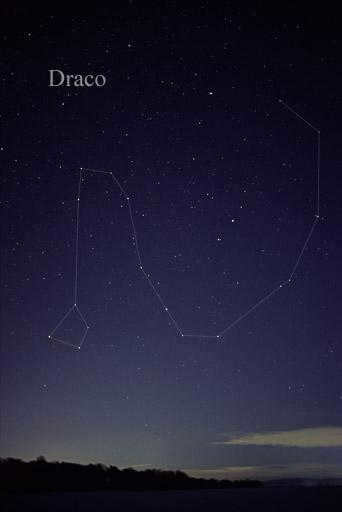
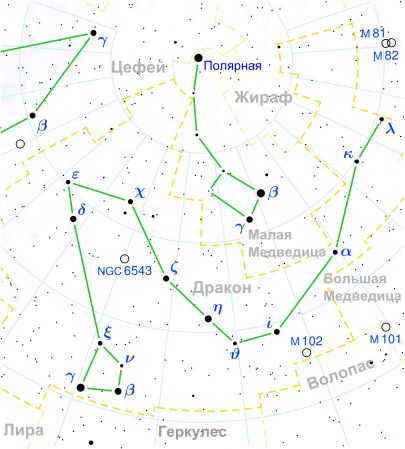
Known as a nearly polar constellation, it acquired its name from ancient Greek legends. With an area covering 1083 square degrees, it ranks as the 8th largest constellation. This constellation boasts over 200 stars that are visible to the naked eye, with the star Tuban shining the brightest, closely followed by the star Edasih. Situated adjacent to the Little Bear, the best time for observing this constellation is during the month of May.
Aries
The first sign of the zodiac, Aries is known for its energetic and dynamic nature. Aries individuals are often seen as natural-born leaders, always ready to take charge and make things happen. They are known for their bravery and courage, as well as their passion and enthusiasm. Aries is ruled by the planet Mars, which is the planet of action and aggression. This planetary influence gives Aries a strong desire to achieve their goals and a competitive edge. Aries individuals are also known for their independence and self-confidence, and they are not afraid to go after what they want. Overall, Aries is a sign of initiative, determination, and a desire to be the best.
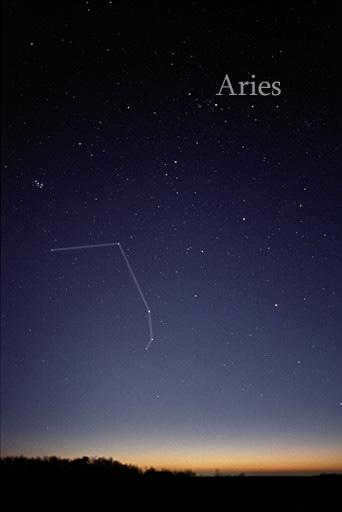
Hamal belongs to the zodiacal constellations and is ranked 39th in magnitude. It boasts approximately 82 stars that are easily visible from Earth. The brightest star in Hamal is followed by Sheretan and Mazartin. This constellation is also home to two blue space objects: NGC 772 galaxy and NGC 1156 galaxy.
Hamal is flanked by the Pisces and Taurus constellations. The ideal time to observe Hamal is during the autumn months, from September to November.
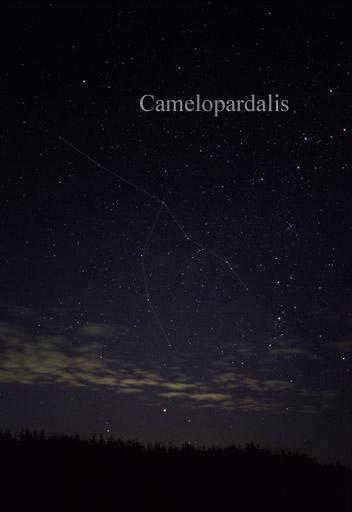
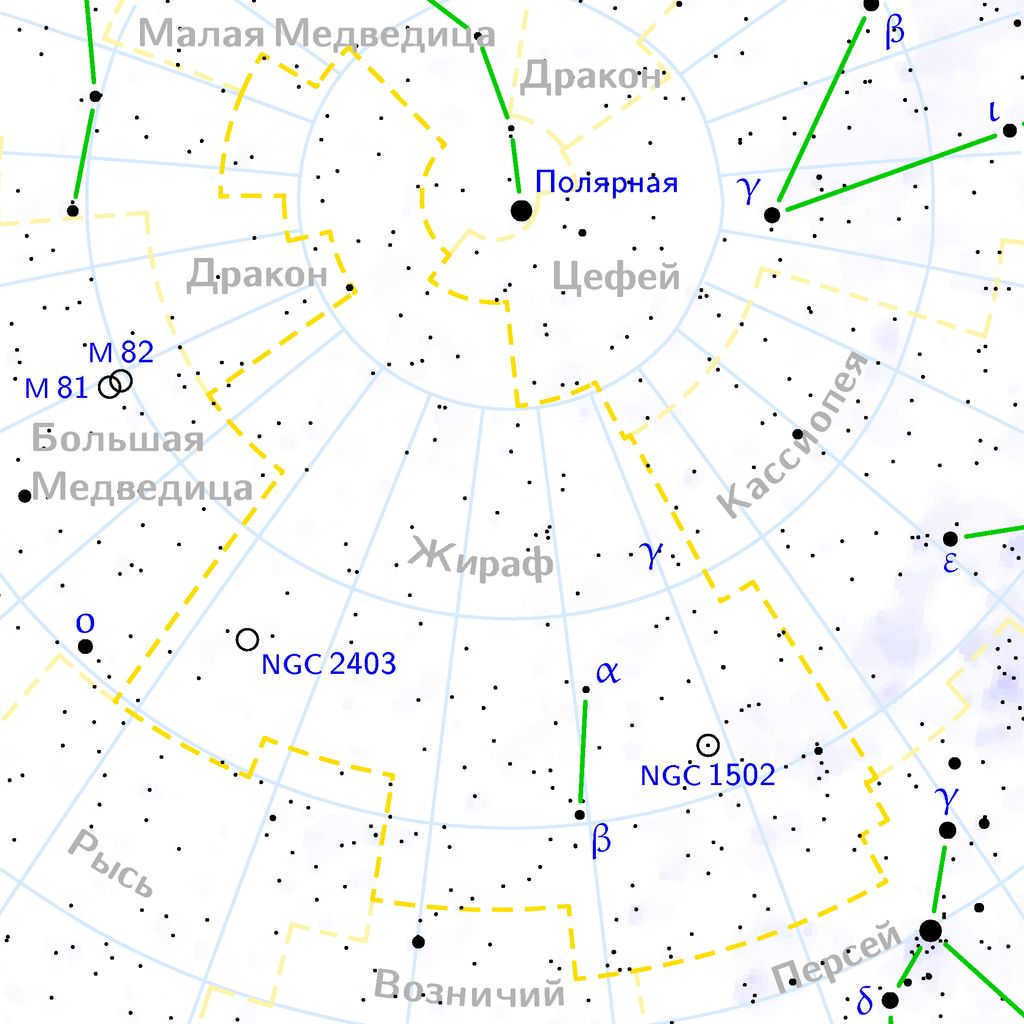
A new constellation came into view during the 17th century. It ranks 18th in terms of brightness and covers an area of 757 square degrees. Currently, there are approximately 50 stars that can be seen without the aid of a telescope. The most prominent star in this constellation is Beta Giraffe.
Adjacent constellations include Ursa Minor, Ursa Major, Draco, Cassiopeia, and Cepheus. The winter months, specifically January and February, offer the best conditions for observing this constellation.
Pegasus
Pegasus is a mythical winged horse that appears in Greek mythology. It is known for its ability to fly and has been depicted in various works of art and literature. Pegasus is often associated with poetry and inspiration, as it is said to have been created by the Muses themselves. The most famous story involving Pegasus is the myth of Bellerophon, who tamed the wild horse and used it to defeat the monster Chimera. Pegasus has since become a symbol of freedom and power, and is often seen as a symbol of the imagination and the creative spirit.
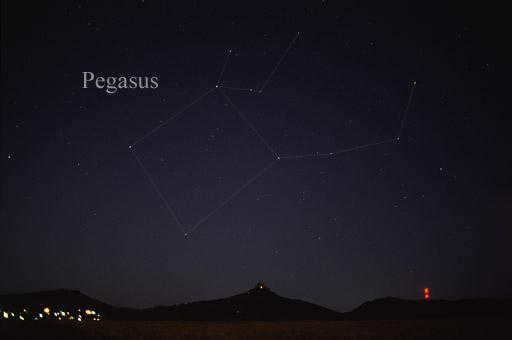
The name Andromeda is derived from Greek mythology. It is one of the largest constellations and is ranked 7th in terms of magnitude. There are approximately 166 stars that can be seen with the naked eye within this constellation. The brightest star in Andromeda is Markab, followed by Shead and Algenib.
Andromeda is best observed during late summer and early fall, specifically from August to October. This time period offers the most favorable conditions for conducting observations.
Table: Northern Hemisphere Constellations in the Sky
Displayed in the table are the complete list of constellations in the northern hemisphere, including their Russian and Latin names, abbreviated names, and the corresponding areas in square degrees.
Greetings, esteemed visitors of our research facility known as Homemaker Art! We cordially welcome you to an enthralling expedition through the celestial expanse, both within our own galaxy and beyond, with a captivating objective: to explore the various constellations residing in the Northern hemisphere. We shall elucidate the methods of locating these constellations in the nocturnal firmament, identify the planets that grace our Earthly view, and divulge techniques for spotting them in the heavens above… The realm of constellations is vast and diverse, each bearing a unique appellation and showcasing a resplendent beauty composed of innumerable stars.
Greetings, dear guests of our research station called Homemaker Art! Our team invites you to a fascinating walk through the stellar and even intergalactic space with the most beautiful goal: to study the constellations of the Northern Hemisphere, how to find them in the night sky, what planets are visible from Earth, how to detect them overhead… What constellations are there in general and what they are called. We’ll tell you and show you.

Assume a relaxed posture to prevent neck stiffness. Prepare for an engaging experience. And… let’s embark on a cosmic journey!
An abridged itinerary of the excursion:
What is a constellation?
A constellation, derived from the Latin word for “group of stars,” refers to the division of the sky into distinct patterns for the purpose of navigation in various scientific disciplines such as astronomy and astrology. Each pattern occupies its own region in the sky, and the stars within a constellation may not be physically connected or in close proximity to one another in three-dimensional space. They can be located at different distances from our planet, appearing to be both near and far from each other. However, when observed from Earth in two dimensions, these stars appear to form a coherent group, creating a recognizable pattern.
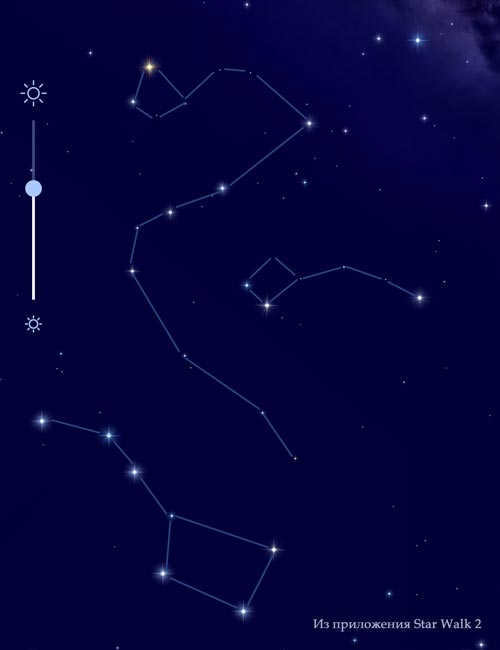
Each constellation and its constituent stars are given individual names. Many of them have origins in mythology, such as Cassiopeia, Ursa Major, Volopassus, Andromeda, and others. Some star groups were named more recently, resulting in more modern names like Compass, Corona Borealis, and Crux. Zodiacal constellations have been recognized since ancient times, totaling 88 in total.
Observing the night sky has long been a familiar activity for humans. The scattering of stars against the backdrop of cosmic darkness has always captured attention, albeit in different ways throughout history. However, it is paradoxical that despite this rich history, modern knowledge about constellations remains relatively limited. Many people are unfamiliar with how to navigate the night sky and only recognize a few well-known constellations like the Big Dipper and Polaris.
Indeed, due to clear reasons, urban dwellers lack the chance to frequently gaze upwards and witness the celestial beauty. This is simply unattainable amidst the bustling city lights. However, there are occasional escapades to the rural regions. And when the skies are cloudless, an abundance of spectacles awaits! Let us now explore the various constellations that grace the northern hemisphere and marvel at the ones visible during the night.
Stars Patterns of the North Hemisphere
In the same way that the Earth’s map is divided into the eastern and western hemispheres, the map of the night sky can also be divided into two hemispheres – the northern and southern. There is also an equatorial part. Since we are located in the northern part, let’s focus on it.
The stars patterns of the northern hemisphere are the patterns that can be observed by individuals on the north side of the equator. These patterns cannot be seen by those living in the southern hemisphere because the Earth, in the grand scheme of the universe, remains in a fixed position in relation to the other stars.
There are certain constellations in the northern hemisphere that are constantly visible. These constellations are located near the polar star and serve as landmarks pointing towards the North Pole. Some of these constellations include the Big and Little Bears, Andromeda, Cassiopeia, the Dragon, Cepheus, Lynx, and the Hounds.
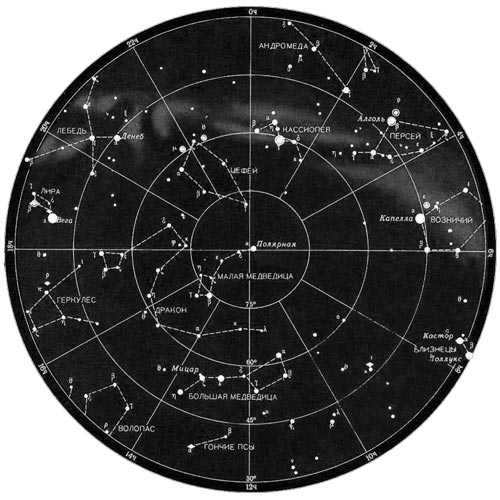
Different constellations become visible at various times of the year or disappear below the horizon. During the summer months, you can easily spot Perseus, the Northern Crown, Lyra, Veronica’s Hair, the Magpie, and Hercules. In winter, Orion is a prominent sight as the bright Betelgeuse is one of the first stars to appear in the celestial canvas. However, it’s important to consider the latitude of your location as well. The northern hemisphere of the Earth is vast, and the constellations visible to someone living in the north may differ from those seen by someone living in the south.
That concludes the theoretical portion. Now, let’s move on to the practical aspect of our journey through the night sky.
Discovering the Northern Hemisphere’s Circumpolar Constellations
Locating the Great Bear and the Little Bear
Let’s begin our celestial navigation by discussing a well-known star, Polaris. If you are unfamiliar with its location, here is a helpful guide:
Searching for Polaris
Our goal is to locate the renowned constellation known as the Great Bear, which resembles a large bucket positioned directly above your head. By drawing a direct line along the front of the bucket and measuring approximately four distances equivalent to the length of that wall, you will encounter the luminous star known as Polaris.
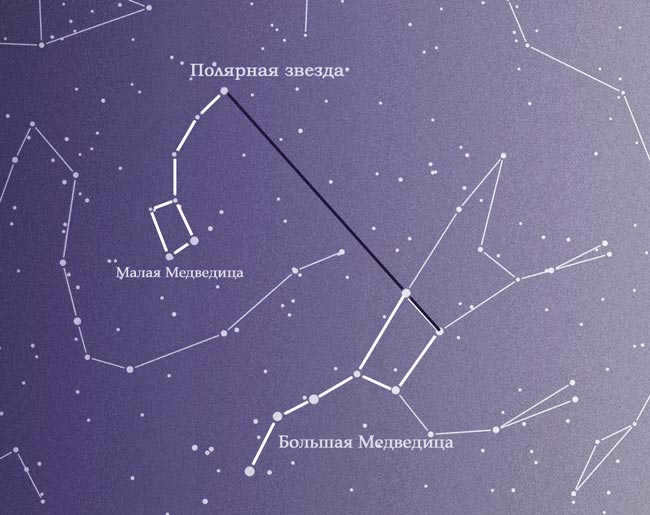
The polar star, also known as the North Star, can be found by locating the tip of the handle of the smaller bucket-shaped constellation known as the Little Bear. This star is not very well visible, so it is best to observe it outside the city where there is no light pollution.
So, we have identified two well-known constellations – Ursa Major and Ursa Minor. Now, let’s explore the other patterns in the sky. What can you spot next to the Bears? Take a close look between the Ladles. You will notice a lengthy line of stars that stretches towards the left and then gracefully curves upwards, downwards, and finally forms a rectangular shape – the head. It resembles a dragon and is known as the Draco constellation. It is quite large in size, although not as prominent as the Big Dipper. However, once you have spotted it, you will discover yet another magnificent celestial creature when gazing at the night sky))))))
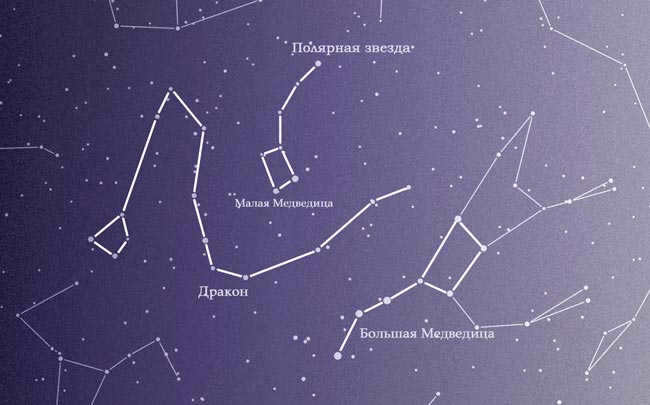
Cepheus
Now, if you “ascend” a little higher from Ursa Minor and the curve of Draco’s neck, you will come across a group of five stars. This group is known as Cepheus. In reality, there are many more stars that belong to this constellation (148 in total). However, the brightest ones form a shape that resembles a house. At the center of this “house” is a small dot, and there are a couple of branches at the base.
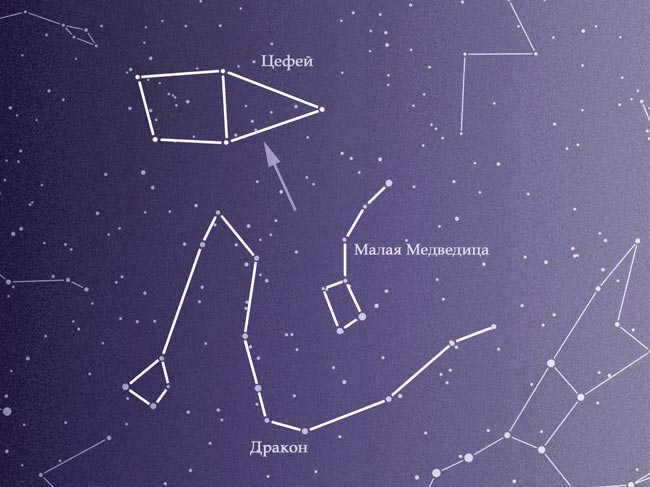
To locate the constellation Cepheus, you can utilize Cassiopeia as a guide. Extend a line from the two outermost stars of Cassiopeia twice the length. This line will intersect with the side wall of the lodge.
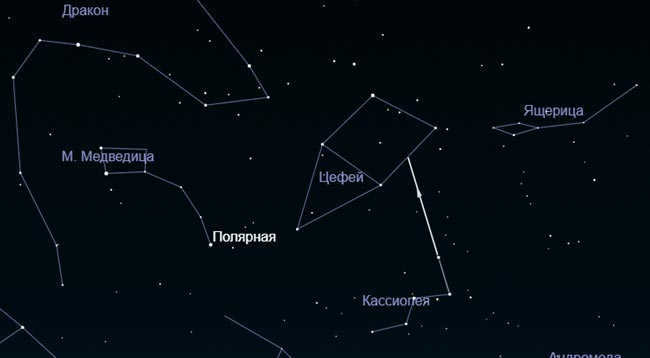
Discovering the whereabouts of Cassiopeia is now within your reach.
Locating the constellation Cassiopeia.
Cassiopeia, another prominent constellation in the northern hemisphere, can be easily found. You can orient yourself using Polaris, or simply memorize its distinct shape. It shines brightly and forms a recognizable pattern. Personally, I have always seen it as a separate entity. It is positioned in close proximity to the North Star and resembles the outline of an unfolded letter W or M. Although, in my mind’s eye, I always envision it as a triangle with a string))).
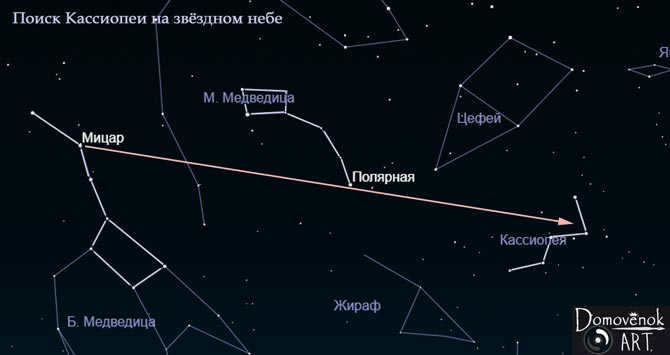
There is a method to locate Cassiopeia by using the Big and Little Dippers. Simply draw a straight line connecting the second-to-last star of the Big Dipper and Polaris, which will intersect with the middle star of the W-shaped constellation. However, I believe that even without these guidelines, it shouldn’t be too hard to spot Cassiopeia in the night sky.
Which other constellations can you see in the night sky in the northern hemisphere?
We have already discussed the constellations near the pole that are visible all year round. However, there are many other fascinating celestial sights to behold in the Northern Hemisphere at night. Let’s delve deeper and explore some more captivating star clusters.
How to locate the Andromeda constellation and galaxy
Despite being the closest galaxy to our Milky Way and rapidly approaching us, the Andromeda Nebula appears to be a small star. It is one of the stars within the Andromeda constellation. Locating the Andromeda constellation in the night sky is not a challenging task, although the galaxy itself is barely visible.
Fascinating! The Andromeda Nebula is the sole galaxy that can be observed with the naked eye in both polar and temperate latitudes. Just imagine the vastness of the universe!
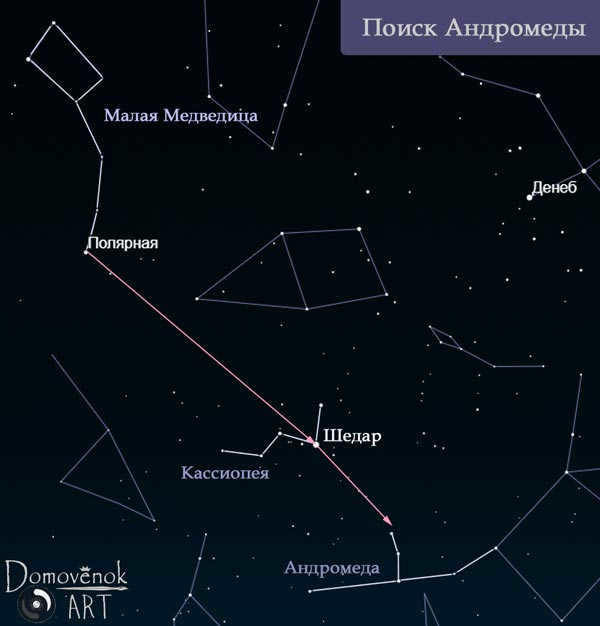

To locate the constellation Cassiopeia and Polaris, you can follow these steps. First, draw a straight line from Polaris through the star Shedar in Cassiopeia (as shown in the image). Then, if you extend the line from Shedar a bit further, approximately halfway between these two stars, you will come across a small cloud-like formation. This formation is known as the Andromeda Nebula galaxy. Additionally, you will notice three stars located in close proximity to the Andromeda Nebula, which are part of the Andromeda constellation. For a clearer understanding, it is recommended to refer to the provided image.
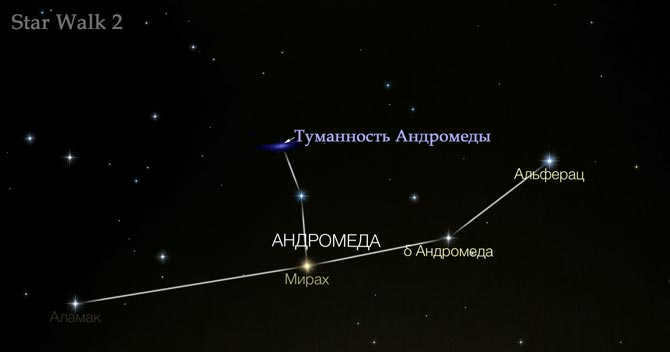
Perseus in the night sky.
Perseus can be easily located in the night sky by looking downwards from the constellation Andromeda and the letter M. It is a significant constellation that is particularly prominent during the summer months, mainly in August.
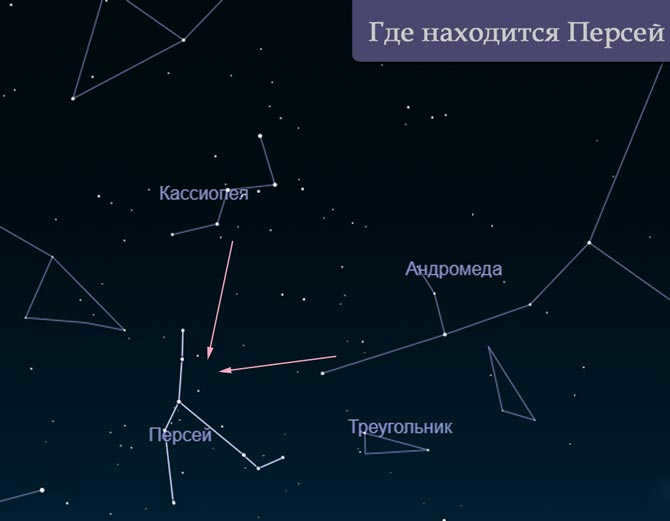
Unraveling the Enigma of Orion
If we shift our gaze “downward” in the expanse of the night sky, somewhere nestled between Perseus and the radiant star Capella from the Ascendant constellation (a prominent star visible in the northeast during the summer months), we will encounter the enigmatic celestial figure known as Orion. This constellation holds an equatorial position, enabling its observation from both the northern and southern hemispheres. However, like all things, its appearance is subject to timing and precision.
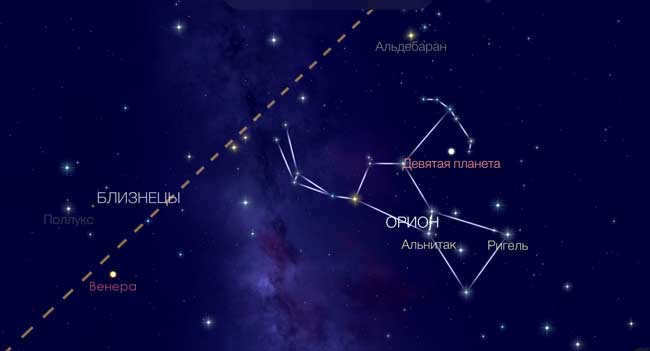
During the winter months, Orion is most visible in the night sky. The initial star of Orion, the red supergiant Betelgeuse, is one of the first stars to become visible. However, if you wish to observe Orion during the summer, you will need to wait until the middle of the night. For instance, in August, between 3-4 am, Orion can be observed in the southeastern section of the sky. The photograph provided was captured at daybreak, around 5 am:

And it’s not hard to spot the constellation itself thanks to its distinctive asterism (a group of stars that are easily recognizable) – Orion’s Belt, which consists of three bright stars in a straight line. And if we widen our view a bit, we’ll notice a recognizable shape resembling an hourglass, formed by the stars Betelgeuse, Bellatrix, Saif, and Rigel.
Did you know? The names of the stars in Orion’s Belt have symbolic meanings and translate from Arabic as follows: Mintaka – belt, Alnilam – string of pearls, Alnitak – girdle.
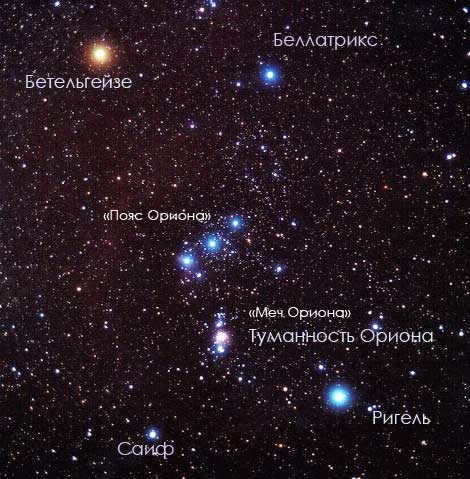
In the Orion Nebula, there is a lively occurrence of star formation, with approximately 700 newly forming stars (according to the information provided by wikipedia))). While we won’t delve into the intricacies of the star creation process and the role of the Orion Trapezium, I strongly encourage you to explore this extraordinary constellation independently. Now, let’s proceed.
Taurus and the stunning Pleiades
Alongside Orion, there exists a marvelous chance to witness another captivating assemblage of stars – the Taurus constellation, which harbors extraordinary mysteries. Taurus can be easily spotted – a portion of its constellation resembles a flock of birds and is situated just above Orion (this is an authentic photograph capturing what is visible in the celestial sphere).
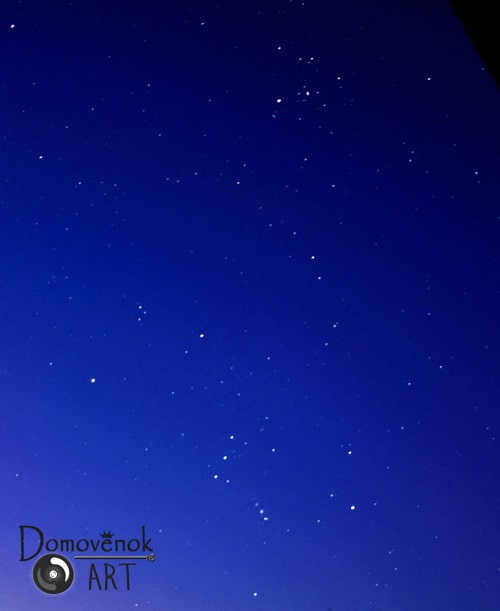
Here is a simplified representation of what the constellation looks like:
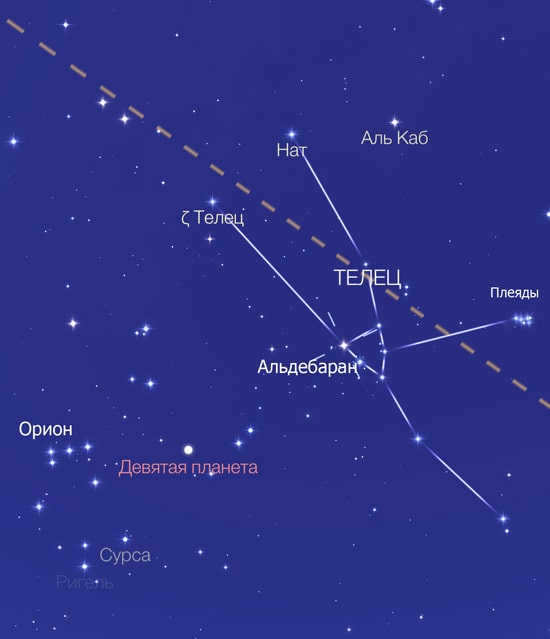
Not far away from the “shoal” lies a stunning celestial formation. It can be easily spotted with the naked eye, but upon closer inspection with the aid of technology, it reveals itself as a magnificent star cluster known as the Pleiades. Scientific studies have confirmed that this cluster is indeed a physical grouping of stars and not just a mere projection. The Pleiades consists of nine prominent members, each named after Greek heroes, including the seven sisters and their parents.
I attempted to capture a photograph of the Pleiades, although my tripod was slightly unstable.
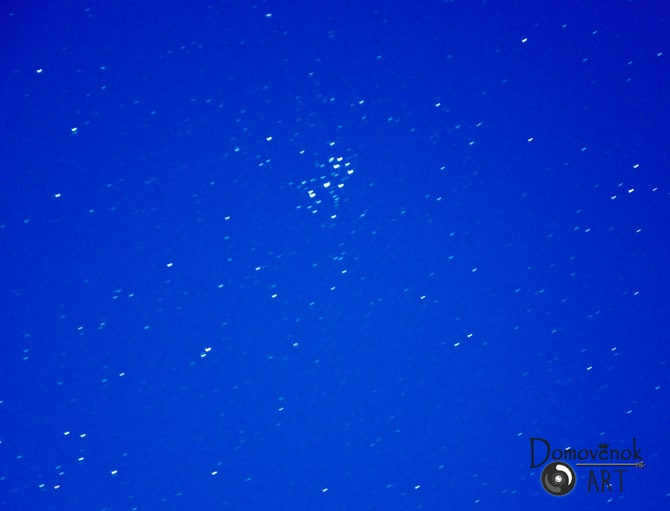
Discovering how to locate the constellations Cygnus, Lyra, and Delphinus in the nighttime sky.
During the summer months, it is possible to observe the renowned constellation Cygnus directly above you. Alternatively, it is also referred to as the Northern Cross. Positioned slightly apart from Draco and Cepheus, it can be found in the opposite direction of Cassiopeia. This constellation is composed of four stars, which can be easily identified. Typically, three of these stars represent the body and wings of a swan, while the fourth star signifies its head.
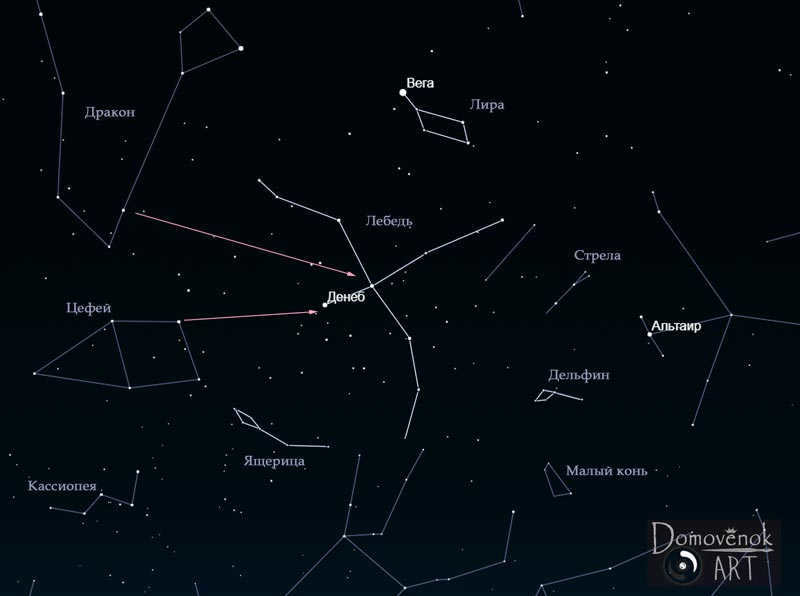
Locating the constellation Lyra is a simple task. It can be found right nearby. It is adorned by the radiant star Vega. However, if you are having trouble spotting the Swan, let me guide you in another way to locate the star Vega in the night sky. To accomplish this, trace a straight line from the edge of the Big Dipper through the head of the Dragon. You will come across a luminous point – that is Vega. And now, adjacent to it, you will notice a slightly less brilliant quadrilateral. It resembles a rhombus. Congratulations, you have successfully discovered Lyra.
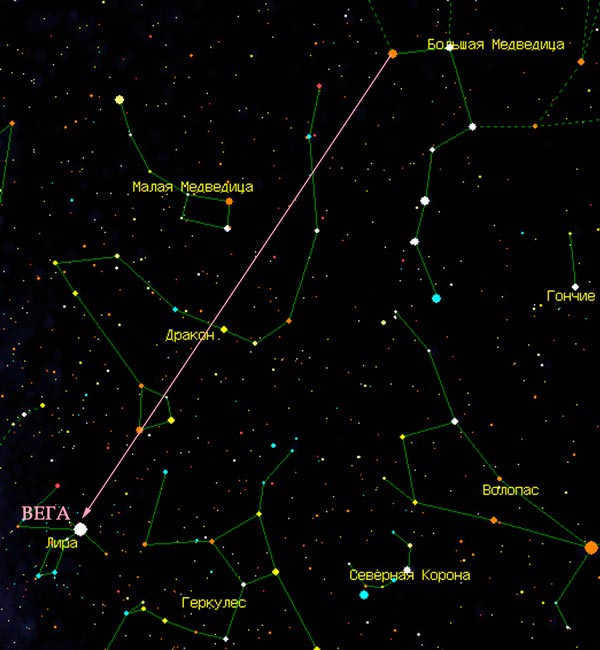
I was also fascinated by another beautiful, yet petite constellation in the celestial sphere, known as the Dolphin. It takes the shape of a rhombus, complete with a graceful tail, resembling the silhouette of a kite soaring through the sky. Positioned in close proximity to the Swan and Lyra constellations, the Dolphin is also flanked by the presence of the Aquarius constellation. While there are numerous other constellations to explore, allow me to shift your attention to a different section of the heavens…
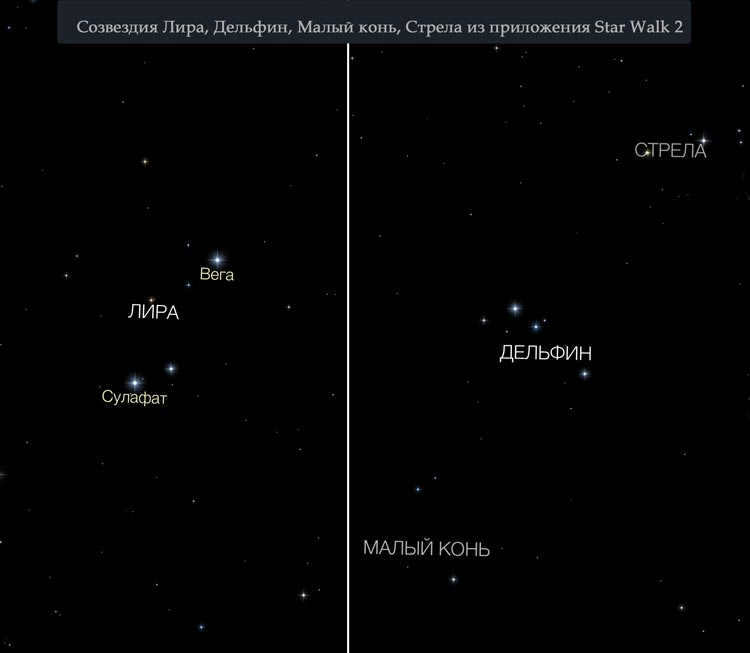
There are several constellations in close proximity including Capricorn, the Northern Crown, Hercules, and more.
If you follow the arc from the bucket of the Big Dipper, you will soon come across a prominent orange giant known as Arcturus – the alpha star in the constellation Volopassus. Although Arcturus is easily visible without any reference points, it stands out due to its slightly orange hue compared to the other stars. It is also very bright (click on the picture ↓ to enlarge).
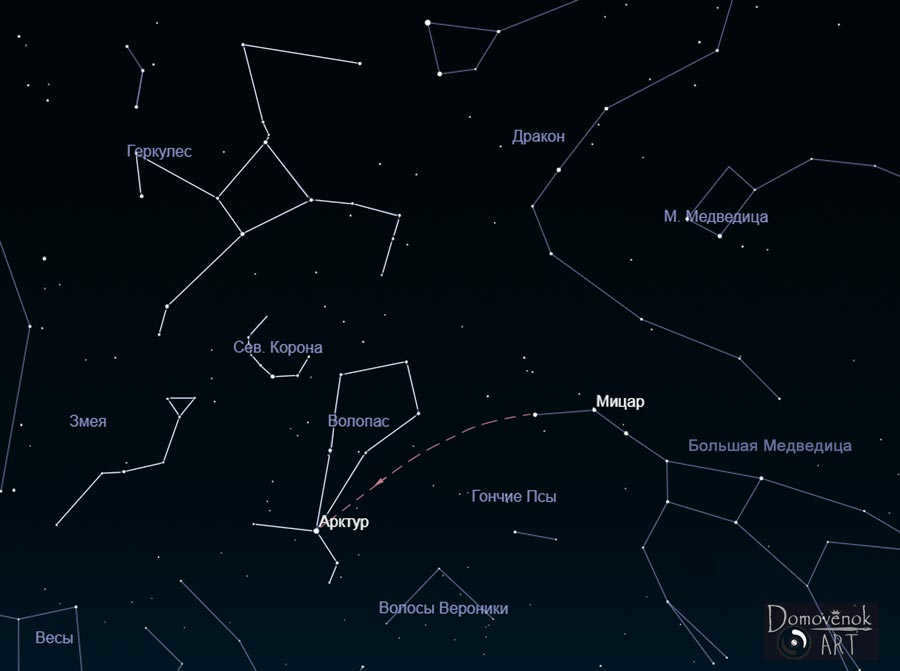
Volopassus has a shape that resembles a crystal or a sword. It is called the “Heavenly Guardian” in Arabic, and in Ancient Greek it is known as the “Guardian of the Bear”.
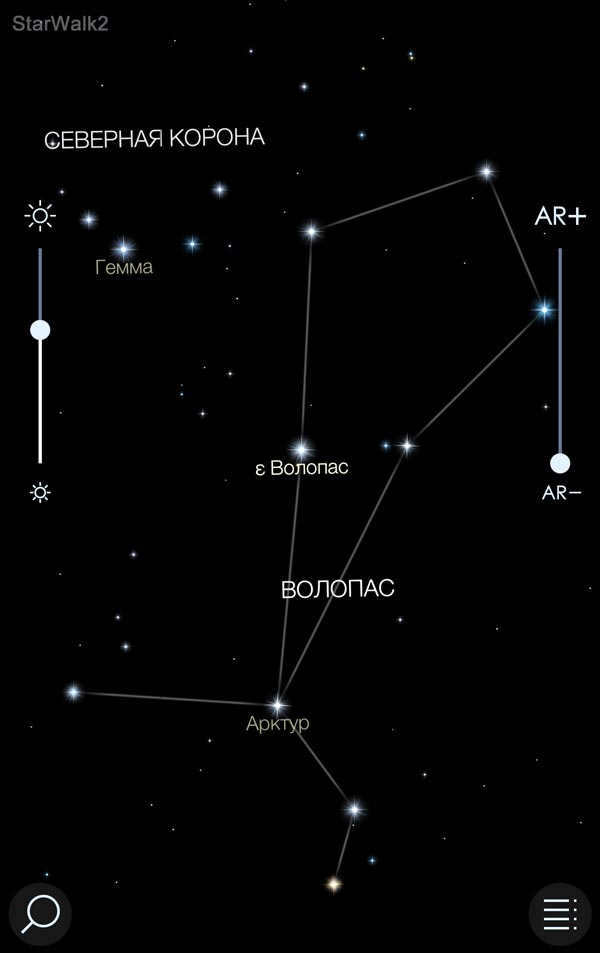
It is fascinating how the Dipper serves as our primary point of reference among the constellations that adorn the night sky. This celestial landmark is of utmost importance and deserves protection, which is why it is guarded by a mighty sword.
Slightly to the left and above Volopassus, we have the pleasure of observing a magnificent bowl-shaped constellation known as the Northern Crown. Its beauty is truly captivating and easily noticeable. Just below the Crown, we can spot a small triangle with a downward tail, which represents the constellation of the Serpent.
If you direct your gaze slightly above and to the left of the Northern Crown, you will be able to discern a rectangular shape with branches resembling arms and legs. That majestic formation is none other than the constellation Hercules.
Now that you are familiar with the whereabouts of the constellations Volopassus, Hercules, Snake, and the Northern Crown, you possess a valuable knowledge of the night sky.
Which planets can we see from Earth?
It is logical to assume that if we can see such distant stars, we should also be able to see objects within our own solar system. So, which planets in our solar system are visible from Earth?
With the naked eye, we can easily spot five planets. The main characteristic that sets planets apart from stars is that they do not twinkle. Additionally, due to their proximity to Earth, they appear as discs in the sky rather than dots like stars. However, this is not always noticeable to the naked eye.
However, there is a challenge in locating planets in the night sky: they are not stationary and constantly move in relation to Earth and each other. Therefore, their positions in the starry sky change each year. It is recommended to use an up-to-date map for accurate tracking.
There are a few planets that have the ability to rapidly alter their position in the celestial sphere. Two examples of such planets are Mars and Mercury. However, Mars stands out due to its unique coloration, being the most reddish dot in the entire sky. It is possible to observe Mars during the nighttime, even appearing in the middle of the night. To illustrate, during the summer of 2020, Mars could be spotted within the Pisces constellation closer to midnight. Interestingly, in August 2021, Mars was observable during the daytime in the Northern Hemisphere, but it became invisible at night.
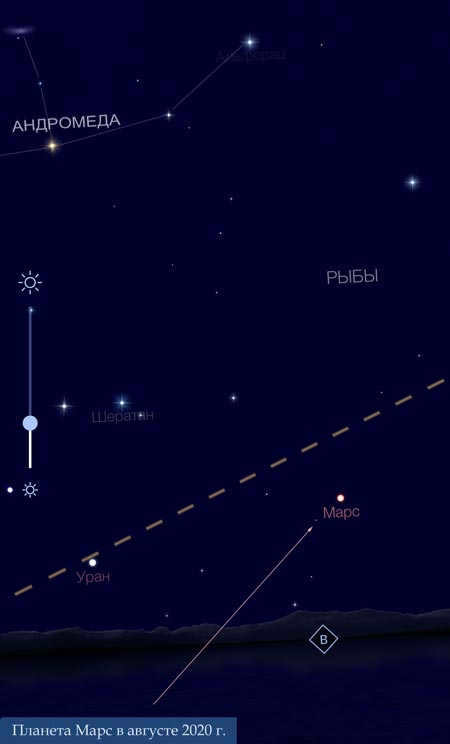
Earth offers a splendid perspective of the neighboring celestial bodies, including the remarkable planet Venus. Venus stands out among all other planets due to its close proximity to Earth, making it appear larger and brighter. Additionally, Venus has the unique characteristic of being one of the first to appear in the sky and one of the last to vanish, resembling a nurturing mother figure. It rises earlier than any other celestial body and sets later than all others.
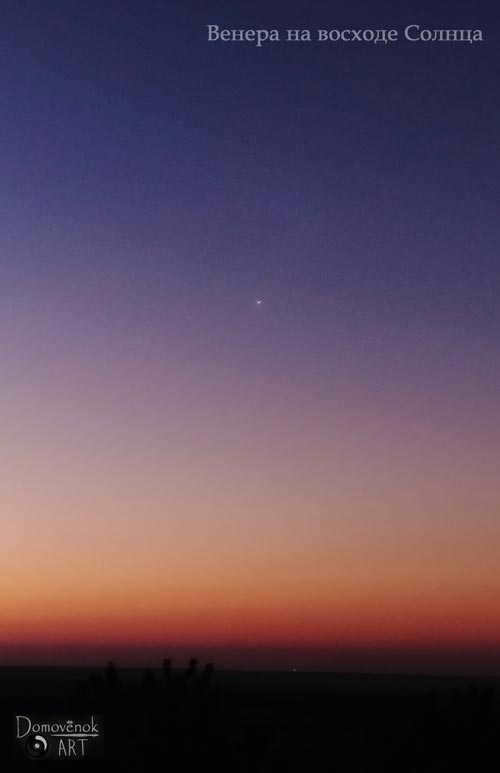
Interested in catching a glimpse of Venus? Keep track of its cycle. One year, you’ll find it in the eastern sky during the morning. The following year, it will make its appearance in the western sky at sunset, disappearing below the horizon by nightfall. This pattern repeats year after year. In 2023, Venus will be visible during sunset in the western part of the sky.
If you’re lucky, you might also be able to observe Mercury. Just make sure to consult maps to determine its current location.
Observe the luminous point in the atmosphere, a slightly more intense hue compared to the surrounding celestial objects? That celestial body is not a star. It is our magnificent celestial neighbor, Jupiter. Furthermore, it is in motion, therefore it is advisable to consult the up-to-date sky charts within the application in order to locate it accurately.
For instance, in the year 2021, it was visible in the southeastern region of the celestial sphere. The accompanying image ↓ was captured during the full moon in the month of August.
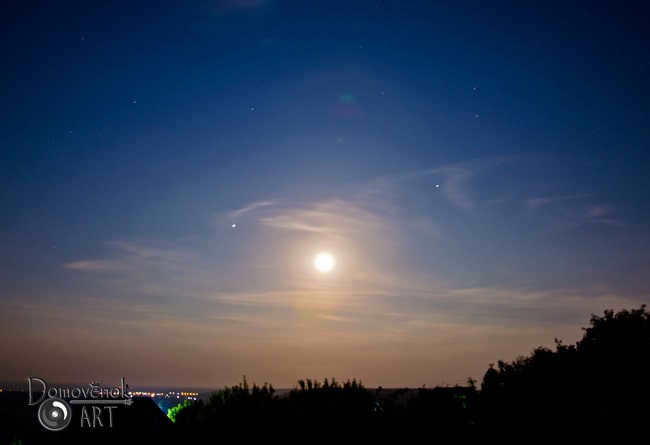
As you may have noticed, Saturn can also be observed in the night sky, unless it is currently below the horizon. If you use a telescope, you can even spot its beautiful rings. However, to the naked eye, Saturn appears as a small, pale disk, with a slightly cooler hue compared to its larger neighbor Jupiter.
The other planets are barely visible from our planet.
Conclusion
Here concludes our delightful journey through the vast expanse of the celestial realm. We now return to the familiar embrace of Earth. I trust that this expedition has proven both intriguing and enlightening, affording you a splendid time and a deeper understanding of the celestial bodies above. Armed with this newfound knowledge, you can now regale others with tales of the constellations that grace the northern hemisphere’s nocturnal canvas, instructing them on how to locate these wondrous formations and elucidating the ancient drawings that captivated our ancestors. Perhaps you may even delve into the captivating legends that surround these celestial marvels, expanding your repertoire of knowledge even further. The pursuit of knowledge is a wondrous endeavor, and sharing it with others is equally gratifying. Moreover, capturing the ethereal beauty of the stars through photography, even with the convenience of a smartphone, is an exhilarating experience. To learn more about this fascinating subject, I encourage you to peruse our article on Astrophotography: How to Capture the Stars.
And… gaze at the heavens more frequently! Not solely after sundown, but also throughout the daytime (while keeping safety in mind, naturally). After all, it is such an effortless, yet truly enchanting routine that aids in shifting from a state of constant rushing and bustling to a state of equilibrium and being present. Ultimately, to achieve this, one must establish a connection with their inner self, which necessitates at least some degree of deceleration and detachment from the mundane. And the captivating celestial sky plays an instrumental role in facilitating this process.
Join us at our research station Homie-Art! May you find harmony both within and without! And transmit through the realm of emotions the visions you wish to manifest in your life! For when you gaze up at the heavens, it is entirely possible that in that very moment, someone hears your thoughts and perceives your desires as the reality you yearn to encounter. The emotions you feel.
With affection, vessel commander and celestial guide Elena.
P.S. Throughout this journey and the composition of this article, a clandestine space navigator was utilized – a remarkable aide, otherwise known as the mobile application StarWalk2. I wholeheartedly endorse it!

Not all people are familiar with the names of stars and constellations, but many are familiar with the most well-known ones.
Constellations are groups of stars that convey emotions, and there is a unique enchantment in the names associated with stars and constellations.
There is no doubt that tens of thousands of years ago, even before the rise of civilizations, people began assigning them names. Space is filled with legendary heroes and monsters, and the sky of the northern latitudes predominantly features characters from Greek mythology.
Photographs of constellations in the sky and their names
There are 48 ancient constellations that adorn the celestial sphere. Each one is linked to a unique legend. It is not surprising, as stars have always held great significance in the lives of people. Without a deep understanding of the celestial bodies, navigation and large-scale farming would have been impossible.
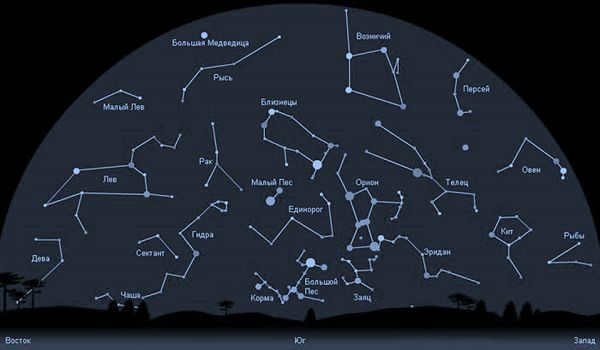

Among all the constellations, the unoccupied ones that are situated at a latitude of 40 degrees or higher are particularly notable. Those living in the northern hemisphere have the opportunity to observe them at any time of the year.
The 5 primary constellations that never set, listed in alphabetical order, are Draco, Cassiopeia, Ursa Major and Ursa Minor, and Cepheus. They can be seen all year round, especially clearly in the southern part of Russia. However, at higher latitudes, the circle of non-setting stars is broader.
It’s important to note that the objects within constellations do not necessarily reside in close proximity to one another. From an observer’s perspective on Earth, the celestial sphere may appear flat, but in reality, some stars are significantly more distant than others. Thus, it would be incorrect to state that “the ship made a jump to the Microscope constellation” (which does exist in the southern hemisphere). A more accurate statement would be “the ship may have made a jump towards the Microscope constellation.”
The most luminous celestial body in the sky
Sirius, situated in the constellation Canis Major, holds the distinction of being the brightest star visible from Earth. In regions located in the northern hemisphere, its radiance can only be observed during the winter season. As one of the nearest large astronomical objects to the Sun, its luminous rays take approximately 8.6 years to reach our planet.
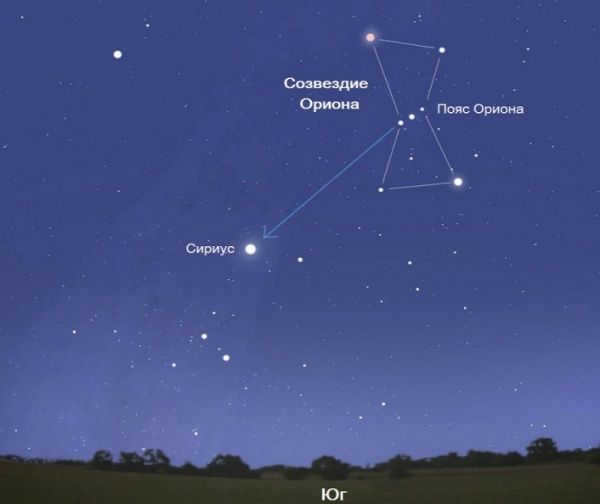
The Sumerians and ancient Egyptians were revered as gods. 3,000 years ago, Egyptian priests were able to accurately predict the timing of the Nile flood by observing the rising of Sirius.
Sirius is a binary star system. The primary star, Sirius A, is approximately twice as massive as the Sun and shines 25 times brighter. Sirius B, the companion star, is a white dwarf with a mass comparable to the Sun and a brightness one-quarter that of the Sun.
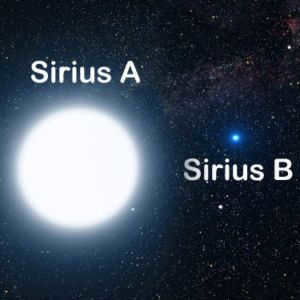
Sirius B is perhaps the most massive white dwarf that astronomers are aware of. Other dwarfs of this type are only half as heavy.
Arcturus in Volopassus is the brightest star in the northern latitudes and is one of the most unique celestial bodies. It is 7.3 billion years old, nearly half the age of the universe. With a mass roughly equal to that of the Sun, it is 25 times larger because it is composed of the lightest elements – hydrogen and helium. It seems that when Arcturus formed, there were not many metals and other heavy elements present in the universe.
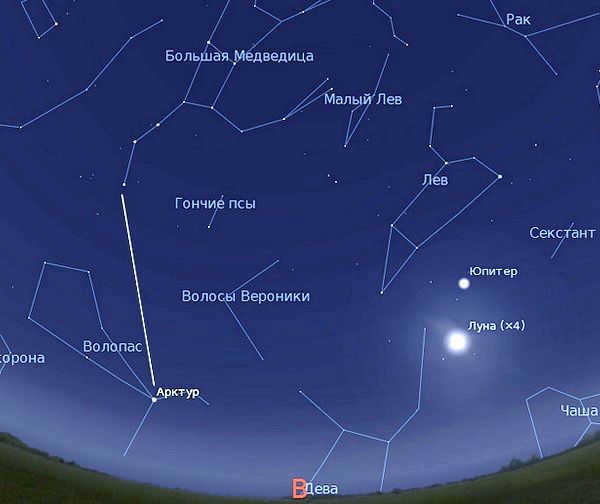
In a similar manner to a ruler in banishment, Arcturus traverses the cosmos accompanied by a retinue of 52 diminutive stars. Conceivably, these celestial bodies constitute an assemblage that was engulfed by our Milky Way galaxy an exceedingly protracted time in the past.
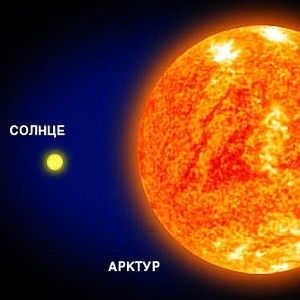
Arcturus, a member of the red giant class, is situated at a distance of approximately 37 light-years, which is relatively close in the grand scheme of the universe. Its luminosity is 110 times greater than that of the Sun. The image illustrates the relative sizes of Arcturus and the Sun.
The color of a star is determined by its temperature, which in turn is influenced by its mass and age. The most scorching stars are the young, massive blue giants, with surface temperatures reaching up to 60,000 Kelvin and masses up to 60 times that of the Sun. Slightly cooler but still impressive are the class B stars, with Spica, the alpha star of the Virgo constellation, standing out as a shining example.
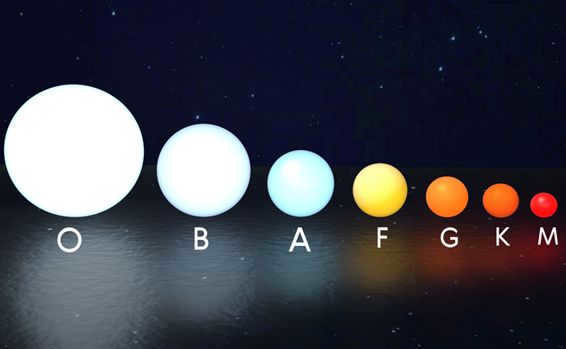
Among the stars in the sky, the ones that are the coldest are the small, ancient red dwarfs. Their surface temperature averages around 2-3 thousand Kelvin, and their mass is only one-third that of the sun. The provided diagram effectively illustrates how the color of these stars is influenced by their size.
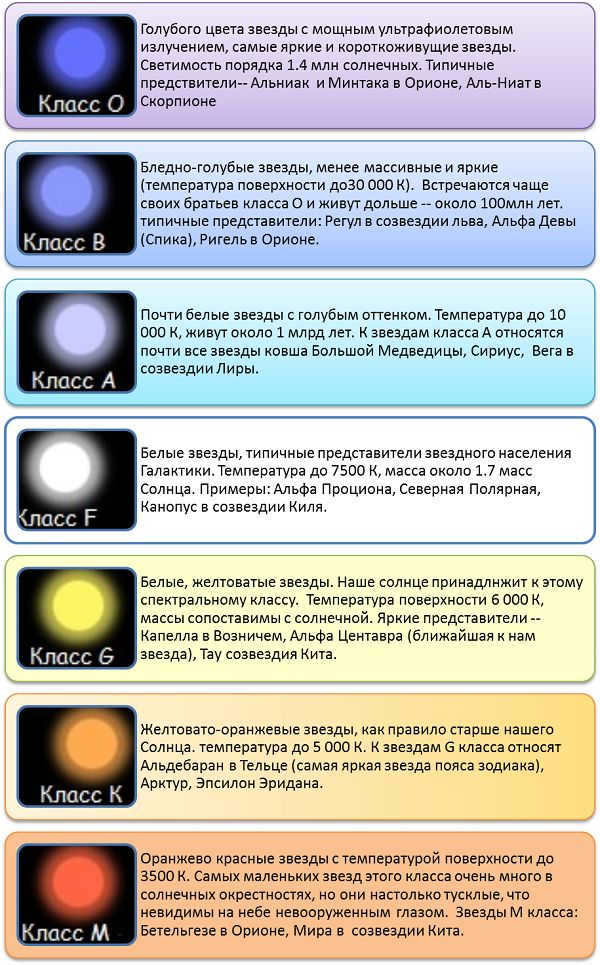
The classification of stars is based on their temperature and color, which is represented by 7 spectral classes in the field of astronomy, denoted by Latin letters.
Exquisite titles of celestial bodies
The vocabulary of contemporary astronomy may be bland and utilitarian, devoid of any personal designations for the celestial entities. Nevertheless, our ancestors bestowed exceptional appellations upon the most radiant and significant nocturnal luminaries. While many of these names trace their origins to the Arabic language, a few can be traced back to the ancient Akkadians and Sumerians.
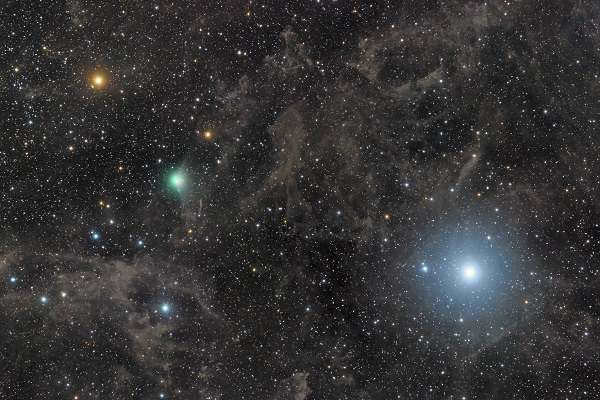
Polaris. The faint, final star in the handle of Ursa Minor’s dipper, the guiding beacon of all ancient mariners. Polaris hardly ever budges and consistently indicates the north. Each nation in the northern hemisphere has bestowed upon it a title. The “Iron Stake” of the ancient Finns, the “Tethered Horse” of the Khakasses, the “Hole in the Sky” of the Evenks. The ancient Greeks, renowned explorers and seafarers, referred to the polar star as “Kinosura”, which translates to “canine appendage”.
Sirius. The star got its name from ancient Egypt, where it was associated with a form of the goddess Isis. In ancient Rome, it was known as Canicula, which is the origin of our word “vacation”. This is because Sirius rose in Rome at dawn during the hottest days of summer, when the city’s life came to a halt.
Aldebaran. It always follows the Pleiades cluster in its motion. In Arabic, it means “follower”. The Greeks and Romans referred to Aldebaran as the “Eye of the Calf”.
The Pioneer-10 probe, launched in 1972, is currently heading towards Aldebaran. It is estimated to reach its destination in 2 million years.
Vega. Arab astronomers referred to it as “The Falling Eagle” (An nahr al waghi) after the distorted “waghi”, meaning “falling”, which led to the name Vega. In ancient Rome, the day it rose above the horizon before sunrise was considered the final day of summer.
Vega was the first star (aside from the Sun) to be captured in a photograph. This occurred nearly 200 years ago in 1850 at the Oxford Observatory.
Betelgeuse. Its Arabic designation is Yad Al Juza (twin hand). During the Middle Ages, due to translation confusion, the term was misread as “Belle Juza”, which eventually became Betelgeuse.
This star is adored by science fiction authors. One of the characters in the novel “Hitchhiker’s Guide to the Galaxy” hails from a small planet in the Betelgeuse system.
Fomalgaut. Alpha South Pisces. The term “Fish Mouth” in Arabic. It is the 18th brightest celestial body visible at night. Archaeologists have discovered evidence that Fomalgaut has been revered since ancient times, dating back 2,500 years.
Canopus. One of the few stars whose name does not have Arabic origins. According to Greek mythology, the name is derived from Canopus, the helmsman of King Menelaus.
The planet Arrakis, featured in the renowned book series by F. of Herbert, revolves around Canopus.
How many constellations exist in the sky
It has been determined that individuals have been grouping stars together for over 15,000 years. In the earliest written records, which date back 2 millennia, there were descriptions of 48 constellations. These constellations are still visible in the sky today, with the exception of the large Argo, which has since been divided into four smaller constellations: Corma, Sail, Keel, and Compass.
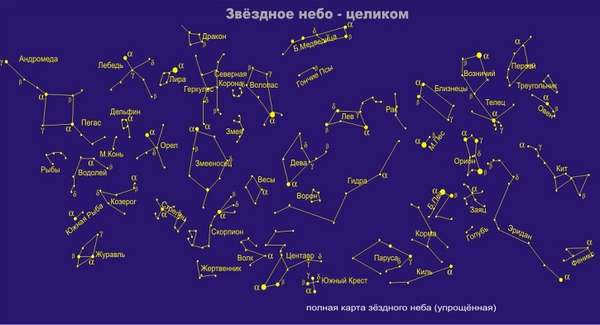
Thanks to the advancement of navigation, fresh constellations began to emerge in the 15th century. Imaginative shapes adorn the celestial sphere – Peacock, Telescope, Indian. The precise year when the most recent of them materialized is known – 1763.
At the start of the previous century, there was a comprehensive reassessment of the constellations. Astronomers enumerated 88 stellar clusters – 28 in the northern hemisphere and 45 in the southern hemisphere. Particularly noteworthy are the 13 constellations of the zodiacal belt. And this is the final tally, with no plans for future additions by new astronomers.
Regrettably, it is not feasible to witness all 28 constellations during a single evening, as the laws of celestial mechanics are unforgiving. However, in exchange, we are treated to a delightful assortment. The night skies in winter and summer exhibit distinct appearances.

Today, we will discuss some of the most captivating and prominent constellations in the celestial sphere.
The Ursa Major – serves as a significant navigational landmark in the nocturnal heavens. It aids in locating various astronomical entities effortlessly.
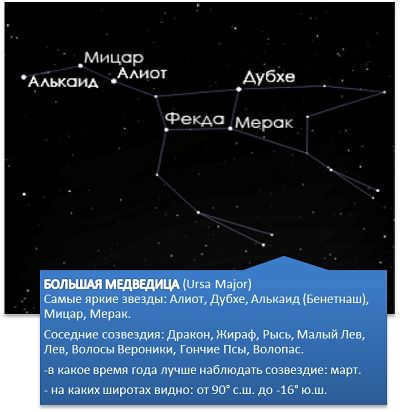
Polaris, the well-known star, is located at the end of the tail of the constellation known as the Little Dipper. Unlike their earthly counterparts, celestial bears have long tails. In Yekaterinburg, there are available prostitutes for both men and women, and their services are provided 24/7.
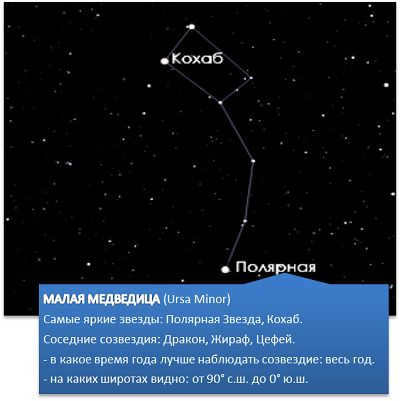
The Dragon constellation is a vast celestial formation located in close proximity to the Ursa Major and Ursa Minor constellations. It is worth mentioning that the star μ Dragon is also known as Arrakis, a name derived from ancient Arabic that translates to “dancer”. Another interesting fact is that the star Kuma, which is located in the ν region of the Dragon constellation, is a binary star system that can be observed using regular binoculars.
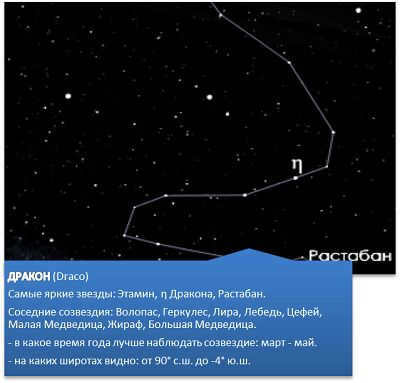
It is a well-established fact that Cassiopeia’s ρ star is a supergiant, shining hundreds of thousands of times more brightly than the Sun. In the year 1572, Cassiopeia experienced its most recent eruption.
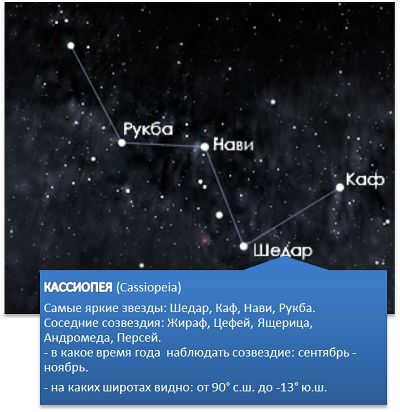
There was a disagreement among the ancient Greeks about the ownership of it. the lyre. Various myths attribute it to different heroes – Apollo, Orpheus or Orion. The renowned star Vega is a component of the Lyra constellation.
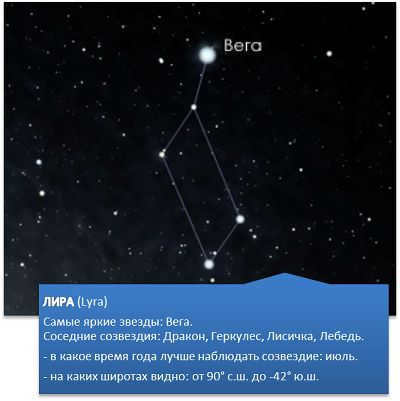
The constellation Orion is the most notable celestial arrangement visible in our atmosphere. The primary stars comprising Orion’s belt are commonly referred to as the Three Kings or Magi. The renowned star Betelgeuse can be found within this constellation.
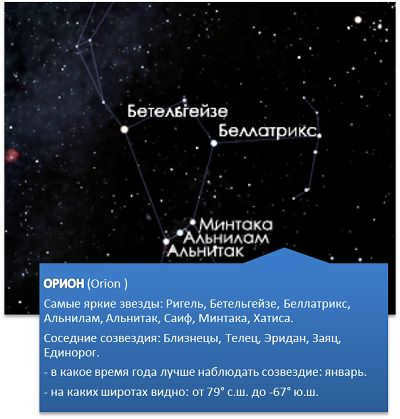
Cepheus is visible throughout the entire year. In 8,000 years, Alderamin, one of the stars in this constellation, will take over as the new North Star.
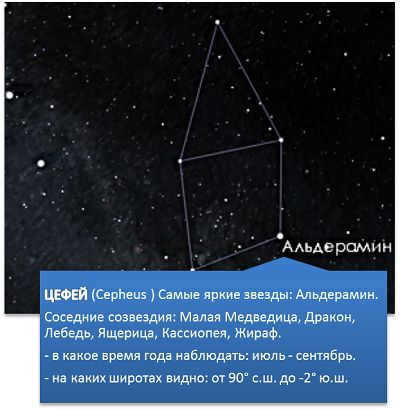
Within the expanse of Andromeda resides the M31 nebula. This celestial structure serves as a nearby galaxy, easily discernible to the unaided eye during optimal stargazing conditions. Positioned at a staggering distance of 2 million light years, the Andromeda Nebula showcases its ethereal beauty from afar.
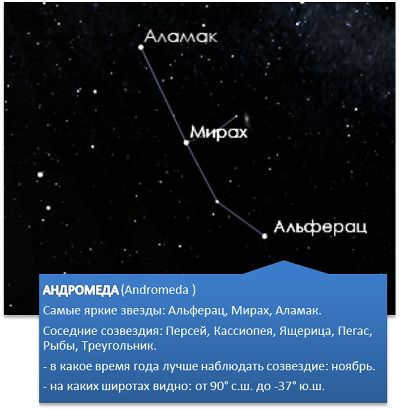
The constellation known as Veronica’s Hair is named after a queen from Egypt who offered her hair as a sacrifice to the deities. The north pole of our galaxy can be found in the vicinity of Veronica’s Hair.
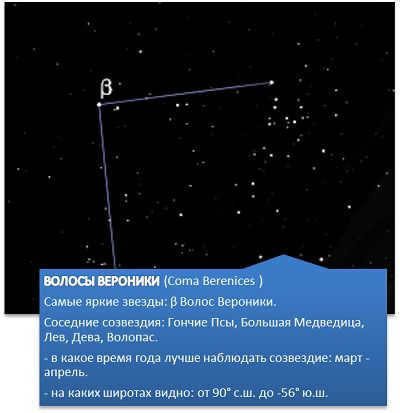
The well-known star Arcturus is also referred to as Alpha of Volopas. Egsy8p7, a galaxy located at the farthest reaches of the observable universe, lies beyond Volopas. This galaxy is recognized as one of the most remote objects ever identified by astronomers, positioned 13.2 billion light years away.
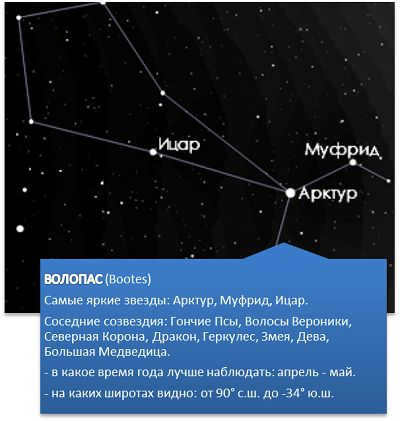

Exciting Constellations for Kids
Inquisitive young stargazers will find it fascinating to discover constellations and observe them in the night sky. Parents can organize a nocturnal adventure for their children, sharing captivating tales about the extraordinary field of astronomy and witnessing certain constellations firsthand with the little ones. These are the type of concise and comprehensible narratives that young explorers are bound to adore.
In ancient Greece, the deities transformed all individuals into creatures and cast them into the heavens. This was simply the way things were. On a certain day, Zeus’ spouse transformed a nymph named Callisto into a bear. The nymph had a young son who was unaware of his mother’s transformation.
As the son grew older, he pursued a career as a huntsman and ventured into the forest armed with a bow and arrow. It so happened that he encountered a mother bear. As the huntsman raised his bow and fired, Zeus froze time and flung them all into the sky – the bear, the huntsman, and the arrow.
Ever since that moment, the constellation Ursa Major has traversed the heavens alongside the little one, who had transformed into the huntsman’s son. The arrow also remains in the sky, but it remains stationary, ensuring order in the heavens.
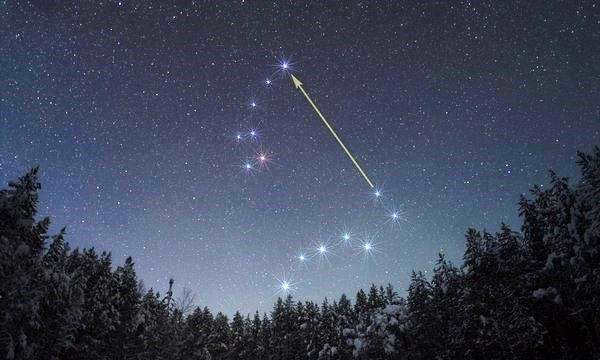
It is always simple to locate the Ursa Major constellation in the night sky, as it resembles a large container with a handle. And once you have spotted Ursa Major, you can easily locate Ursa Minor as well. Although Ursa Minor is not as prominent, there is a method to find it: the two outermost stars in Ursa Major will guide you directly towards Polaris, which is the tail of Ursa Minor.
Polaris
All the celestial bodies in the sky are in constant motion, but Polaris remains stationary. It serves as a dependable reference point because it always indicates the direction north, earning it the title of the guiding star.
In ancient times, sailors navigated the open seas on ships equipped with immense sails, yet they lacked the modern convenience of a compass. Consequently, when a ship found itself far from land and unable to discern any visible landmarks, the risk of becoming disoriented and lost was significantly heightened.
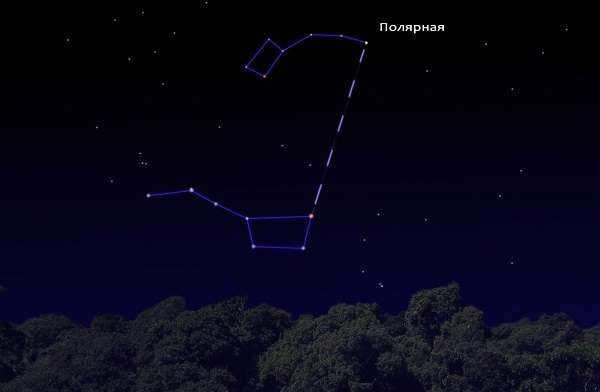
Whenever this event occurred, a seasoned captain would patiently await the arrival of darkness in order to catch sight of the Polaris and ascertain the northern route. By having knowledge of the northern direction, it became effortless to determine the precise location of the remaining world and chart a course that would lead the vessel back to its designated home port.
Star Dragon
Residing amidst the celestial luminance of the night sky is a magnificent creature known as the star dragon. Ancient tales tell of its involvement in the epic conflicts between the divine deities and formidable titans, dating back to the very beginning of existence. According to the legends, the goddess of war, Athena, seized hold of the colossal dragon amidst the ferocity of battle and hurled it into the heavens, positioning it precisely between the constellations of Ursa Major and Ursa Minor.

The constellation known as the dragon is quite large, with its head being formed by 4 stars and its tail being formed by 14 stars. The brightness of its stars is not very high, which could be attributed to the dragon’s age. After all, it has been a significant amount of time since the beginning of existence, even for a mythical creature like the dragon.
Orion
Orion, who was the son of Zeus, had a life filled with numerous accomplishments. He was renowned for his hunting skills and became a favorite of Artemis, the goddess of hunting. Orion often boasted about his strength and luck, but one day he was fatally stung by a scorpion. Artemis pleaded with Zeus to save her beloved companion, so Zeus decided to immortalize Orion by placing him in the night sky. Today, the great hero of ancient Greece can still be seen as a constellation named Orion.
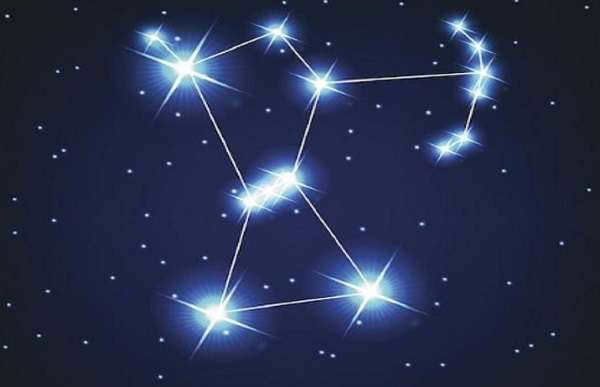
The constellation of Orion is particularly notable in the northern hemisphere. It is a large grouping of bright stars. Orion is best seen during the winter months and is easily identifiable: just look for a prominent hourglass shape with three bright blue stars in the middle. These stars are known as Orion’s belt, and their names are Alnitak (on the left), Alnilam (in the middle), and Mintak (on the right).
Familiarizing oneself with Orion can aid in locating other constellations and individual stars.
Sirius
If you locate the position of Orion, you can effortlessly locate the renowned Sirius. All you have to do is trace a line to the right of Orion’s belt. Simply search for the most brilliant star. It is crucial to keep in mind that it is only visible in the northern sky during the winter season.
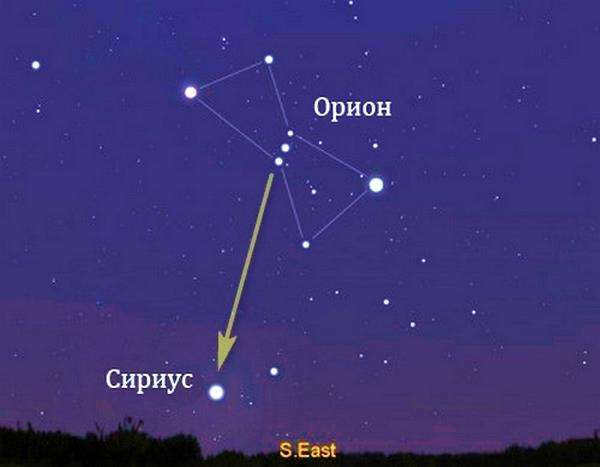
The brightest star in the sky is Sirius. It belongs to the constellation of Canis Major, which is the loyal companion of Orion.
Sirius is actually a binary star system, consisting of two stars orbiting around each other. One star is very hot and bright, and its light is visible to us. The other star is much dimmer and cannot be seen with a regular telescope. However, millions of years ago, these stars were once a single massive entity. If we had lived during that time, Sirius would have been 20 times brighter!
What is the meaning of the name of a star that is shiny and sparkling?
Sirius. It is extremely luminous, to the point where it can even be seen during daylight.
What constellations can be observed without the use of any equipment?
All of them. Constellations were identified by ancient civilizations long before the invention of telescopes. Additionally, without the need for a telescope, it is possible to observe planets such as Venus, Mercury, and Mars.
Which constellation is considered the largest?
Hydra. It spans such a vast area in the sky that it cannot be fully contained within the northern hemisphere and extends beyond the southern horizon. Hydra covers nearly a quarter of the entire horizon.
Which constellation is the smallest?
The smallest, yet most brilliant, is the Southern Cross. It can be found in the southern hemisphere.
To which constellation does the Sun belong?
The Sun belongs to a constellation known as the Belt of the Zodiac, as the Earth revolves around it. Over the course of a year, we can see the Sun pass through all 12 constellations, one for each month.
Summary
Stars have always held a fascination for humanity. Despite the advancements in astronomy that allow us to explore the far reaches of space, the allure of the ancient names given to the stars remains. When we gaze up at the night sky, we are not only witnessing the past and ancient myths and legends, but also glimpsing into the future, as one day humans may journey to the stars.
There are numerous constellations that exist. While some are familiar to most people, others remain known only to a select few. However, there is a group of celestial bodies that is universally recognized. This article will explore the positioning of the Big Dipper and the Little Dipper. Constellations are often accompanied by a multitude of legends, and a few of these tales will also be recounted. Additionally, we will discuss the most renowned and brilliant stars that are visible within this highly popular cluster.
The nighttime sky is always a captivating sight

The celestial canopy, the constellation of Ursa Major, the constellation of Ursa Minor, Andromeda, the Crux… What could be more exquisite and grandiose? Countless stars twinkle and gleam, captivating curious minds. Humankind has forever sought its position in the cosmos, pondering the mechanics of the world, its place within it, whether it was forged by deities or if it itself is a divine entity. As individuals sat by firesides, gazing into the distant expanse, they discovered a simple truth – the stars are not haphazardly strewn across the heavens. They possess their rightful positions.
The constellations were given various names, such as Libra, Southern Cross, and Triangle, each linked to different objects. The stars within these constellations were named after heroes from Greek mythology, like Andromeda, Perseus, and Cassiopeia. Other stars were named after animals, whether real or imaginary, such as the Lion, Dragon, Big Dipper, and Little Dipper. In ancient times, people displayed their vivid imagination when it came to naming celestial bodies, and it’s not surprising that these names have endured to this day.
The stars that create the Bucket Cluster
The constellation known as the Big Dipper and the Little Dipper in the night sky are widely recognized as the most famous and easily identifiable star clusters in the northern hemisphere. Since childhood, we have been familiar with the fact that the stars of the Big Dipper form a dipper-shaped pattern in the sky, consisting of stars with distinct names. This stellar cluster holds the third position in terms of its size, with the constellations of Virgo and Hydra occupying the top two spots. The Big Dipper contains a total of 125 stars, all of which are visible to the naked eye. The bucket shape is created by seven of the brightest stars in the cluster, each of which possesses its own unique name.
Now let’s focus on the Big Dipper constellation. It is an essential part of the celestial world and holds great significance. Within this group of stars, we can identify:
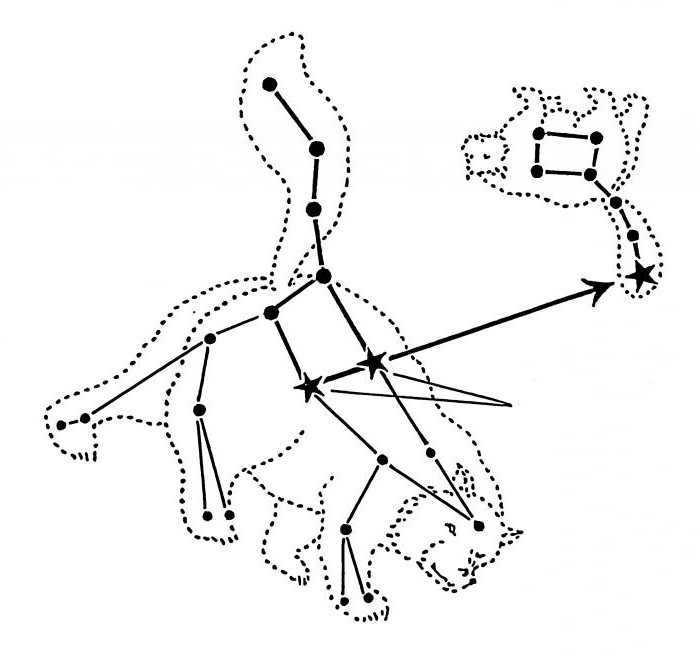
- The brightest star of the Big Dipper is called Dubhe, which means “bear”.
- Merak, the second brightest star, translates to “loins”.
- Fekda means “thigh”.
- Megretz means “beginning of the tail”.
- Aliot means “curd”.
- Mitzar translates as “loincloth”.
- Benetnash literally translates to “leader of the mourners”.
This is only a small part of the stars that form the famous constellation.
Shifting constellations across the celestial sphere
Locating the Big Dipper and Little Dipper constellations in the night sky is a relatively simple task. They are most easily observed during the months of March and April. On crisp spring evenings, we can easily spot the Big Dipper directly overhead, with the stars shining brightly in the expansive celestial dome. However, as we progress into the latter half of April, this group of celestial bodies gradually shifts towards the western horizon. Throughout the summer season, the constellation leisurely moves towards the northwest, offering a captivating display. As we approach the end of August, the dipper can be seen descending lower in the northern sky, where it will remain until the arrival of winter. During the winter months, the Big Dipper once again ascends above the horizon, commencing its journey once more from the northern direction towards the northeast.
Focus on the changing positions of the Big Dipper and Little Dipper constellations throughout the day. For instance, during nighttime in February, we observe the bucket with the handle pointing downwards in the northeast. However, by morning, the constellation will have shifted to the northwest, with the handle now pointing upwards.
Interestingly, the five stars within the bucket form a distinct group and move independently from the other two stars. Dubhe and Benetnash are gradually moving in the opposite direction from the other five stars. Consequently, in the near future, the dipper will assume a completely different configuration. Nevertheless, we won’t be able to witness this transformation, as it will only become noticeable in approximately one hundred thousand years.
The Enigma of Mizar and Alcor
Deep within the constellation Ursa Major lies an enigmatic celestial duo – Mizar and Alcor. What makes them so intriguing? In ancient lore, these twin stars served as a test of visual acuity. Mizar, a moderate-sized star nestled in the Dipper’s handle, is accompanied by the faint presence of Alcor. Those blessed with keen eyesight can effortlessly discern this stellar pair, while those with weaker vision may struggle to distinguish them, perceiving only a solitary gleaming point in the heavens. Yet, Mizar and Alcor harbor a few more astonishing secrets.
The naked eye is unable to detect the inherent peculiarities within them. By directing a telescope towards Mizar, it becomes apparent that there are actually two stars instead of one, known as Mizar A and Mizar B. However, there is more to these stars. Spectral analysis has unveiled that Mizar A is composed of two stars, while Mizar B is composed of three. Regrettably, these celestial bodies are located at such a vast distance from Earth that no optical instruments can fully uncover their secrets.
Stars originating from the Ursa Minor constellation
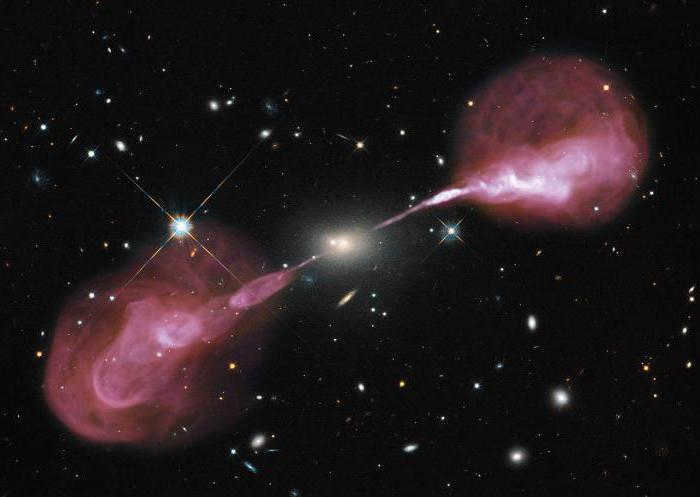
The two stars located on the wall of the bucket are also known as the Pointers. These stars, Merak and Dubhe, earned this name because if we draw a straight line through them, we will reach the polar star in the constellation of the Little Bear. This group of stars that can be seen at night is also referred to as near-polar. There are a total of 25 stars listed in the constellation of the Little Bear, all of which can be observed without the aid of a telescope. It is worth noting that some of these stars are particularly popular and also among the brightest in the night sky.
For a significant period, there was no universally recognized designation
The arrangement of stars in the Little Bear constellation resembles a ladle, similar to the Big Dipper. The Phoenicians, renowned ancient navigators, utilized this group of celestial bodies for navigation purposes. However, Greek sailors relied more on the Big Dipper for their orientation. The Arabs perceived the Little Dipper as a rider, while the Indians saw it as a monkey that clings to the center of the world with its tail and orbits around it. As we can observe, there was no universally accepted interpretation or name for an extended period, and each civilization perceived something distinct, familiar, and easily comprehensible in the celestial expanse. What other revelations can the Big Dipper constellation provide about itself?
Myths and Stories about the Big Dipper’s Star Dubhe
There are countless legends and tales about the constellation formed by the Big Dipper and the Little Dipper.
One popular belief revolves around the brightest star in the Big Dipper, Dubhe. According to the myth, Callisto, the beautiful daughter of King Lycaon, served as one of the huntresses of the goddess Artemis. However, Callisto caught the eye of the mighty Zeus, who fell in love with her. They had a son named Arkas. In a fit of jealousy, Zeus’ wife Hera transformed Callisto into a bear.
Years later, Arkas grew up to become a skilled hunter. While on a hunting expedition, he stumbled upon a bear and was about to shoot it with an arrow. Zeus, witnessing this, intervened and prevented the killing. Instead, he transformed Arkas into a smaller bear. To ensure that the mother and son would always be together, Zeus placed them in the sky as constellations.
The tale of the tiny group of celestial bodies
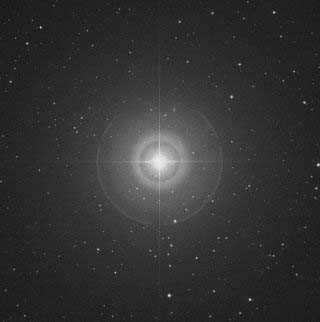
There exists a tale about the constellation known as Ursa Minor. The story goes as follows. In order to protect her son Zeus from his father, the Greek deity Cronus, who had a penchant for consuming his offspring, Rhea clandestinely took the child and concealed him within the depths of a cave. Alongside a goat, the infant was nourished by two nymphs named Melissa and Helis. In return for their service, Zeus, upon ascending to the throne of the heavens, transformed them into bears and positioned them among the stars.
The Story of How the Constellation Came to Be, According to Greenlandic Folklore
Feeling hopeless, Eriulok ventured to the Arctic Ocean and called upon the goddess Arnarkuachssak, the ruler of the deep sea. He shared his personal story and the difficulties he was facing. The goddess made a promise to assist him, but there was a condition – Eriulok needed to retrieve a ladle filled with magical berries that would restore the goddess’s youth. The hunter agreed and embarked on a journey to a distant island where he discovered a cave guarded by a bear. After great struggle, he managed to lull the bear into a deep sleep and successfully pilfered the ladle containing the berries. True to her word, the goddess fulfilled her end of the bargain by granting Eriulok a loving wife, and in return, he received the coveted magic berries. Following all his thrilling adventures, Eriulok married and became the proud father of a large family, causing envy among all the neighboring communities. As for the goddess, she consumed all the berries, becoming several centuries younger, and in her elation, she flung the empty ladle into the sky where it became snagged on an unknown object and remained suspended.
A poignant tale of light and darkness
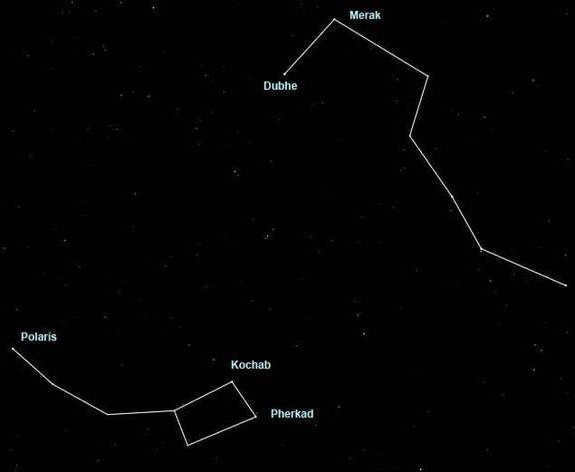
The enigma of constellations has been demystified by progress
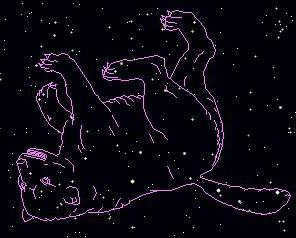
Throughout history, constellations have been a valuable tool for navigation in space, both in ancient times and in the present day. Explorers and seafarers have relied on the brightness and positioning of constellations to determine the time, find their way, and more. However, our connection to the night sky and the stories behind constellations has diminished over time. We rarely gather around a fire and gaze up at the enchanting, starry sky, nor do we create legends about the Big and Little Dippers, Cassiopeia, or Canes Venatici. Few individuals can accurately point out the constellations of Ursa Major and Ursa Minor. Our knowledge from astronomy lessons tells us that stars are incredibly distant, and many of them are actually similar to our own Sun.
Final Thoughts
This article has explored the fascinating constellations of the Big and Little Bear. These celestial formations are easily identifiable in the night sky, and many people have undoubtedly attempted to locate them at some point in their lives. In fact, there are still individuals who, to this day, gaze up at the stars in the hopes of spotting the familiar shape of the dipper.


